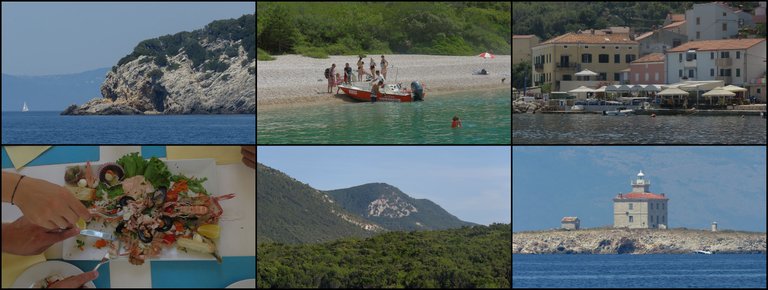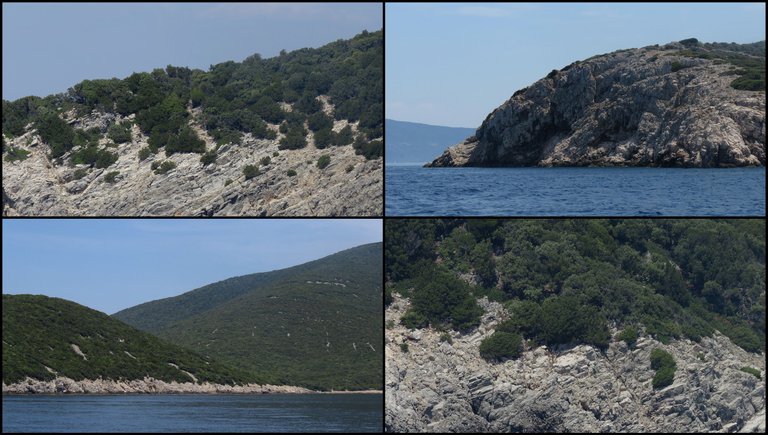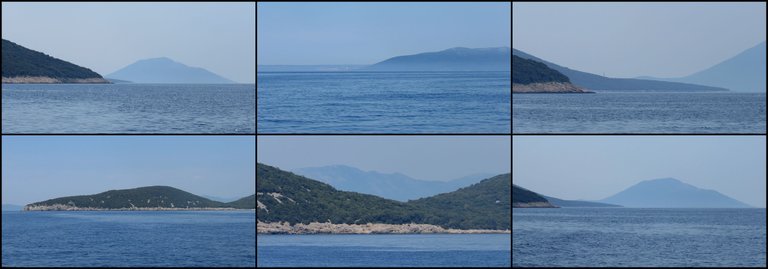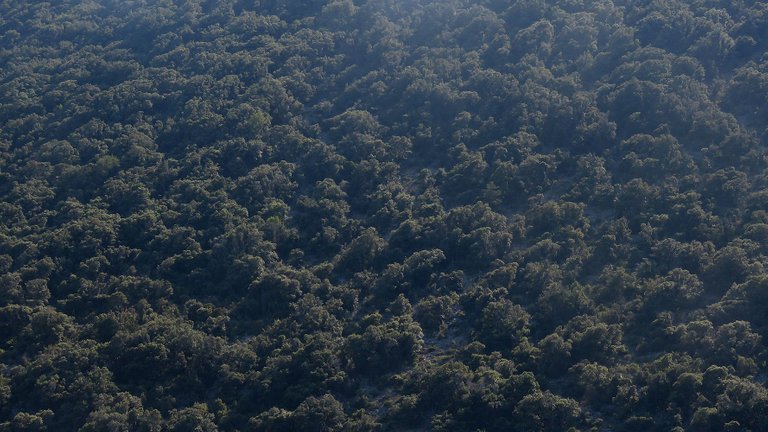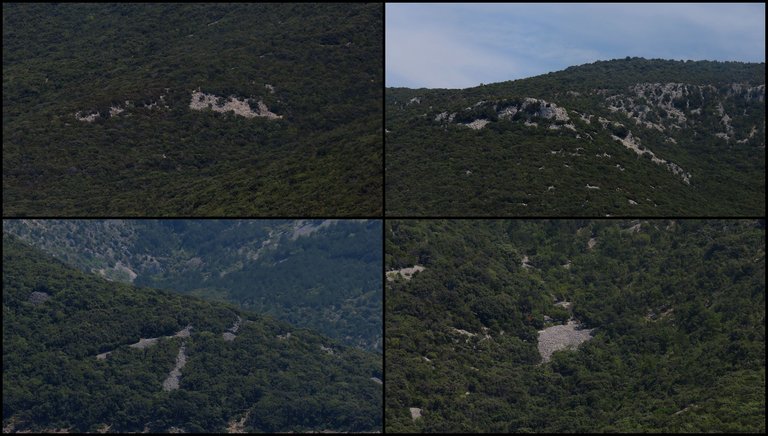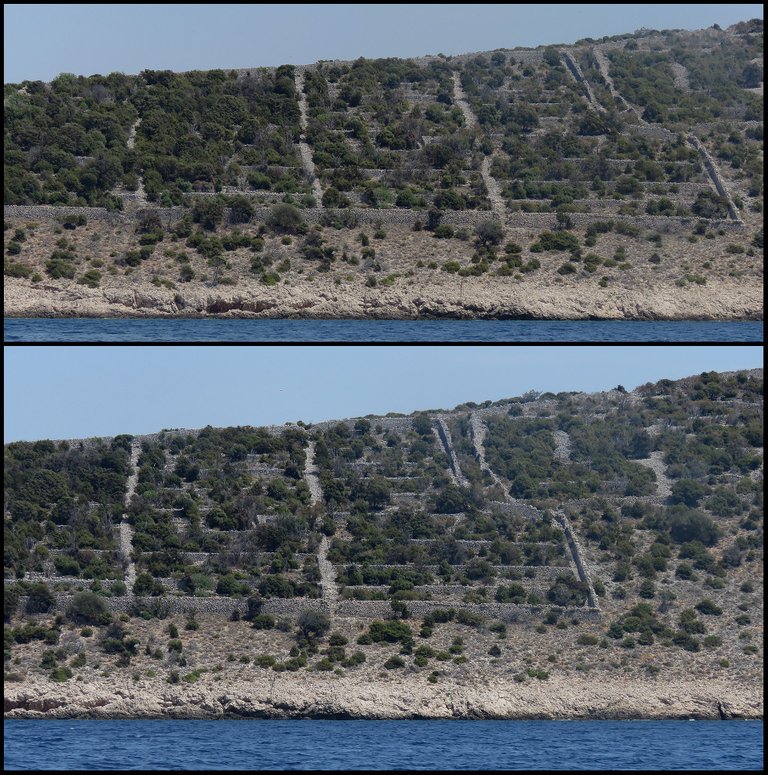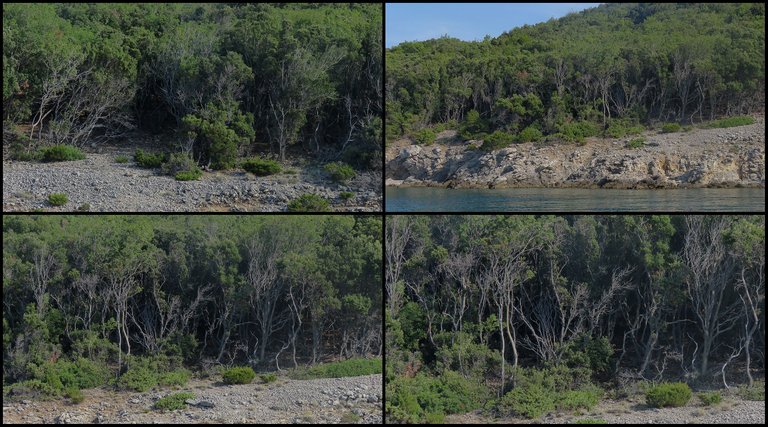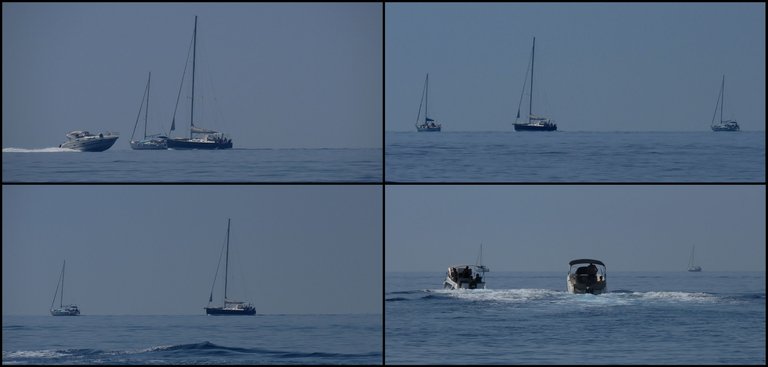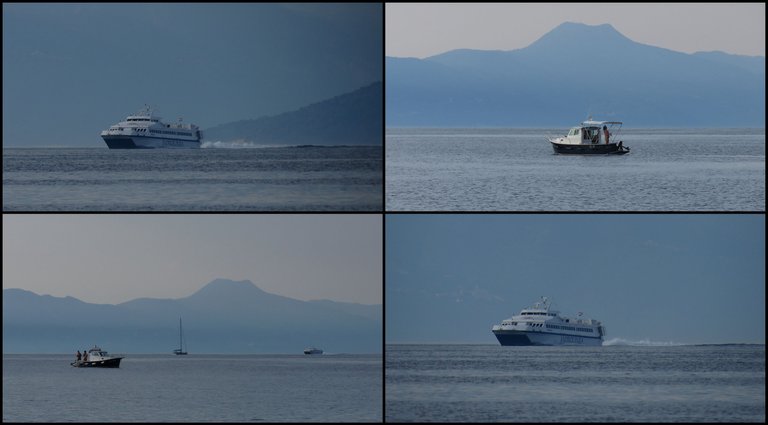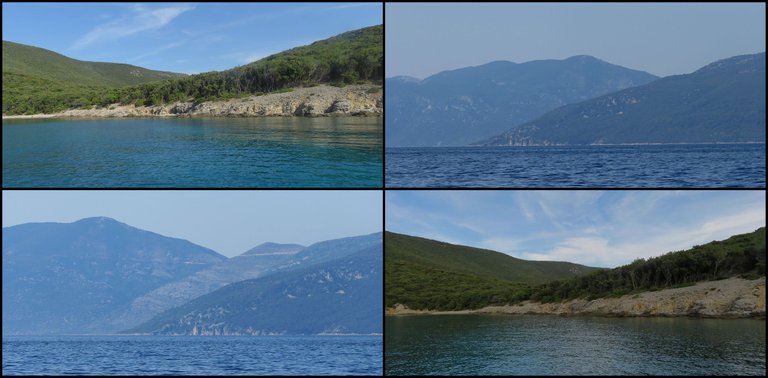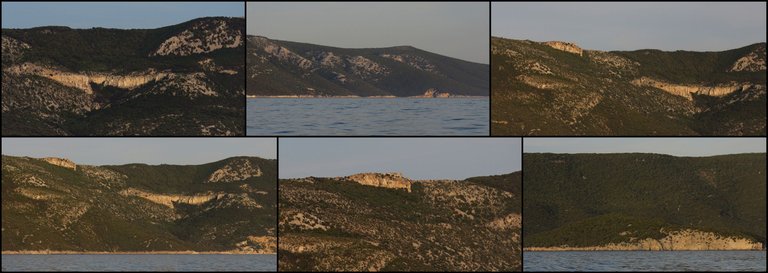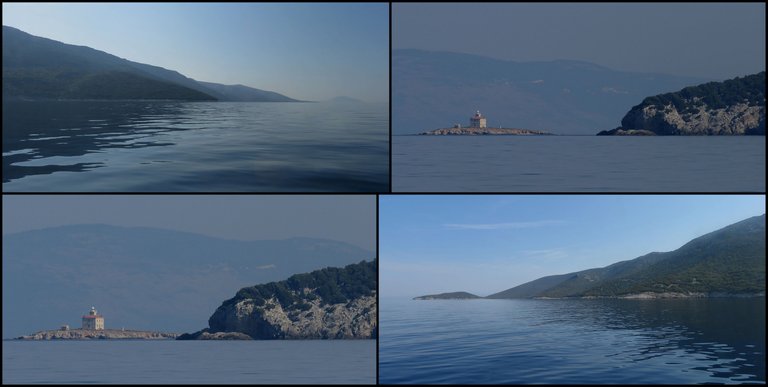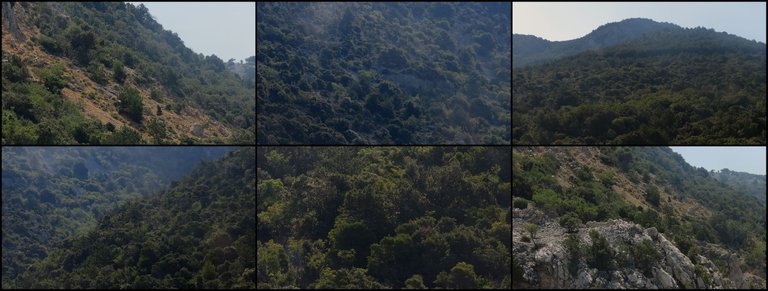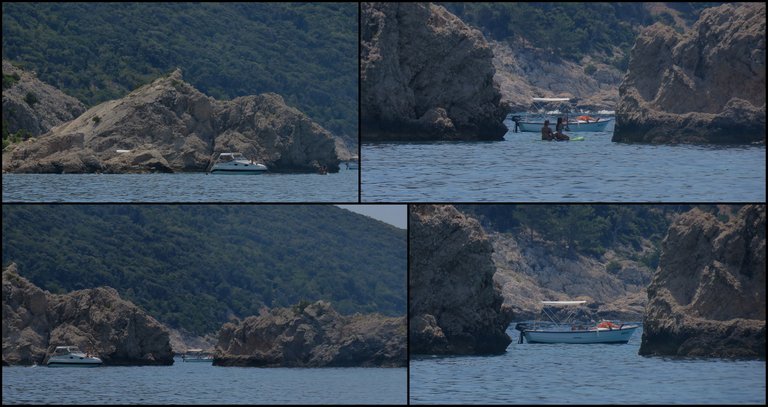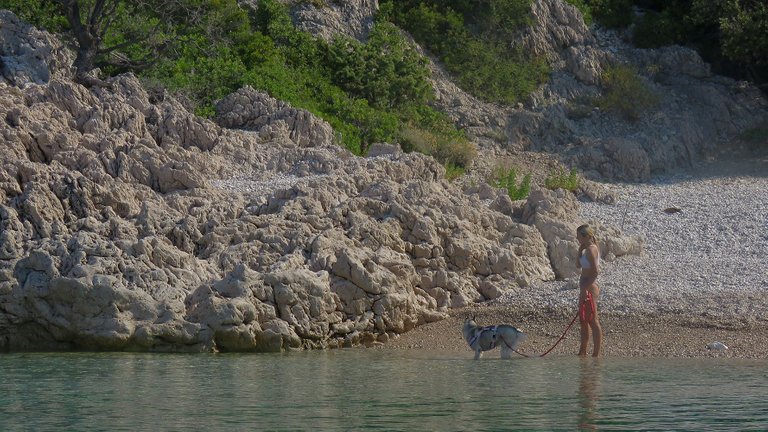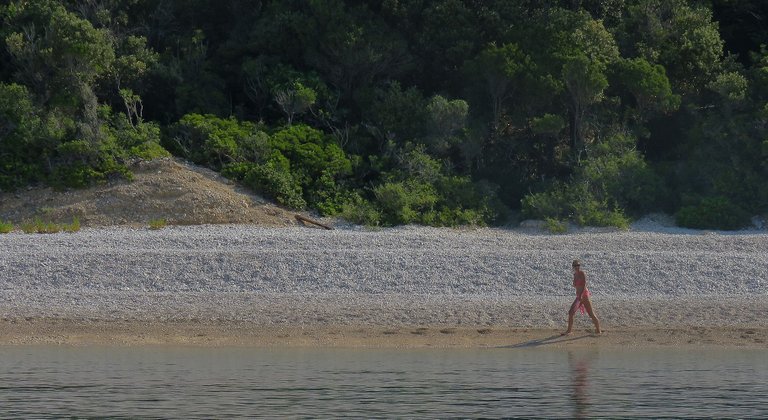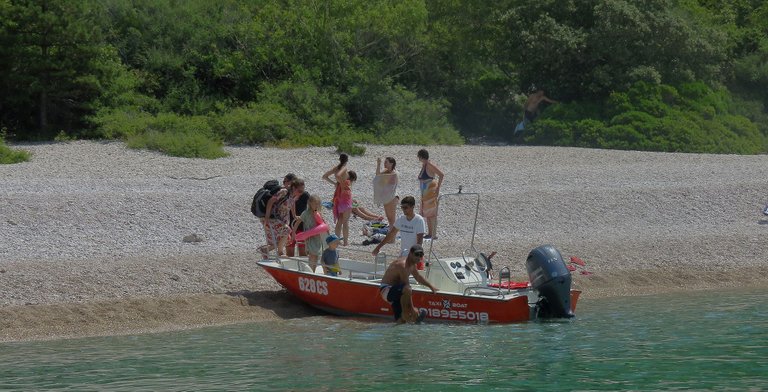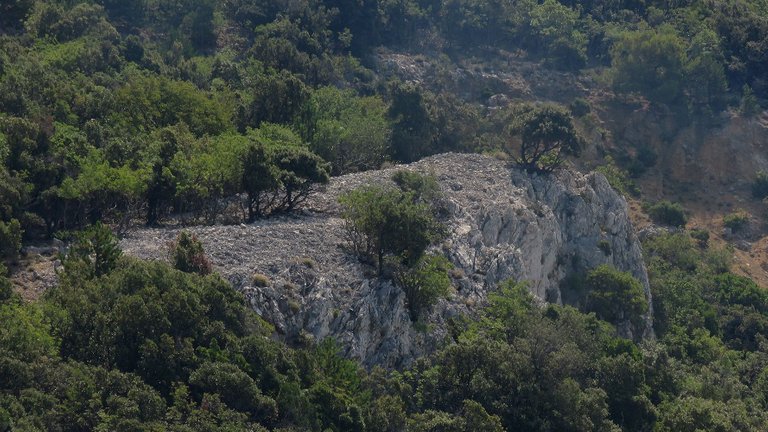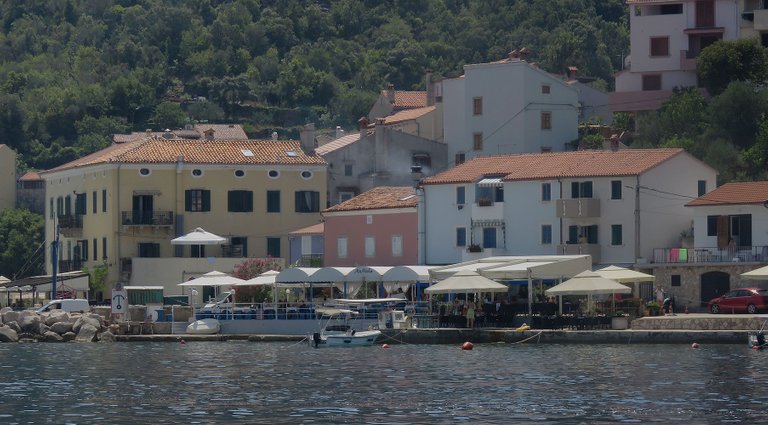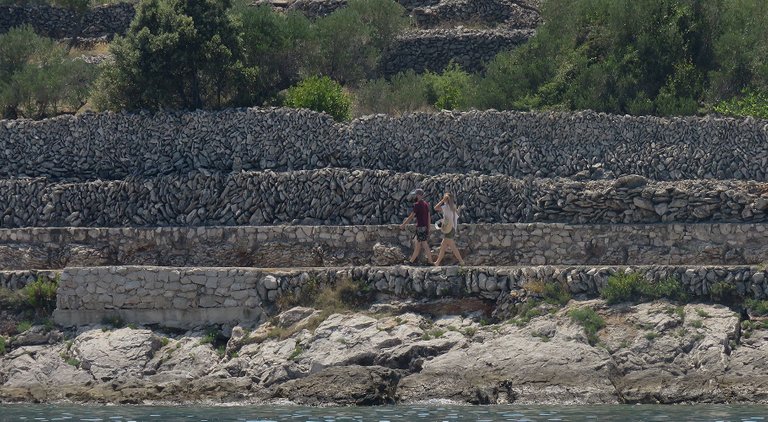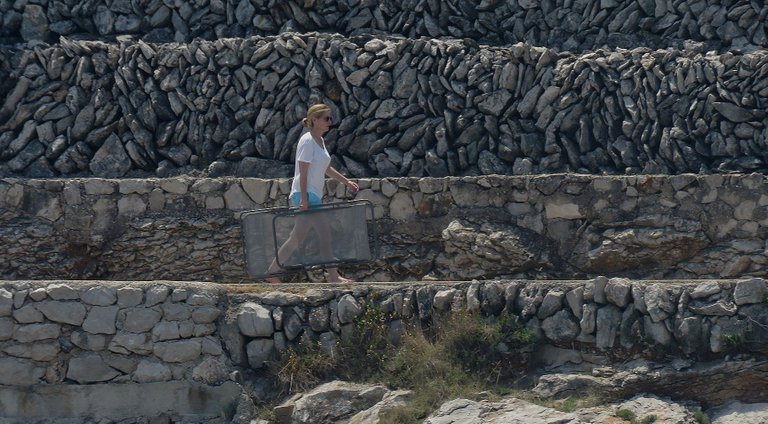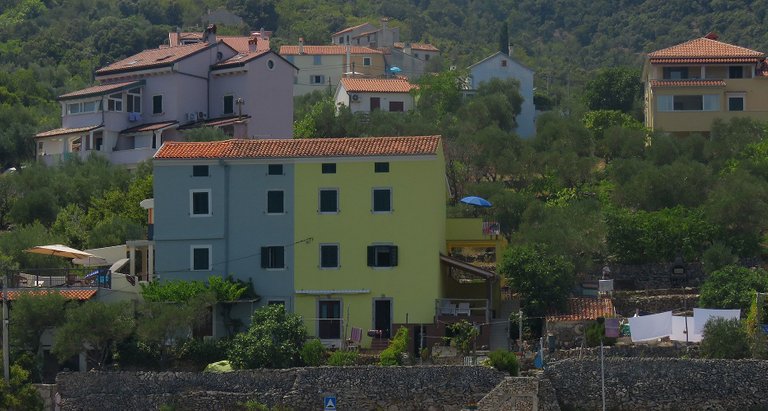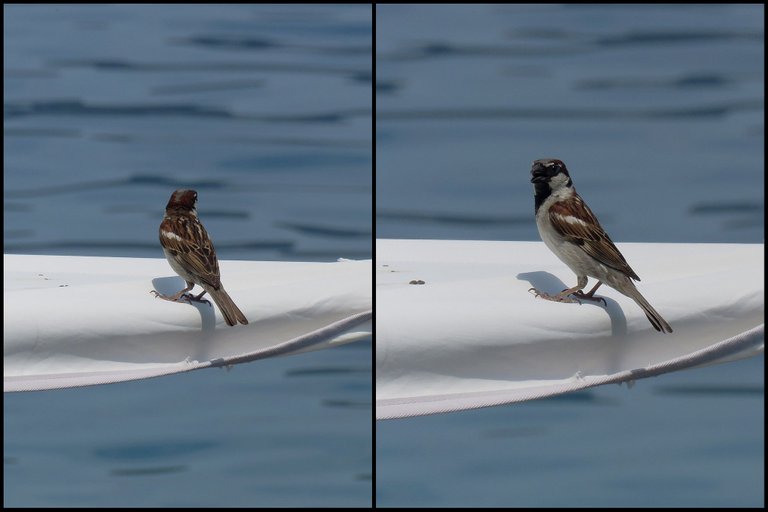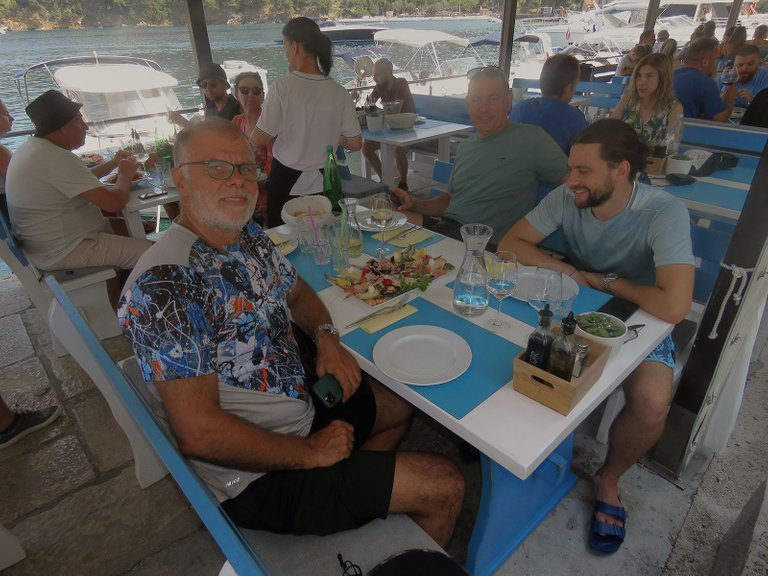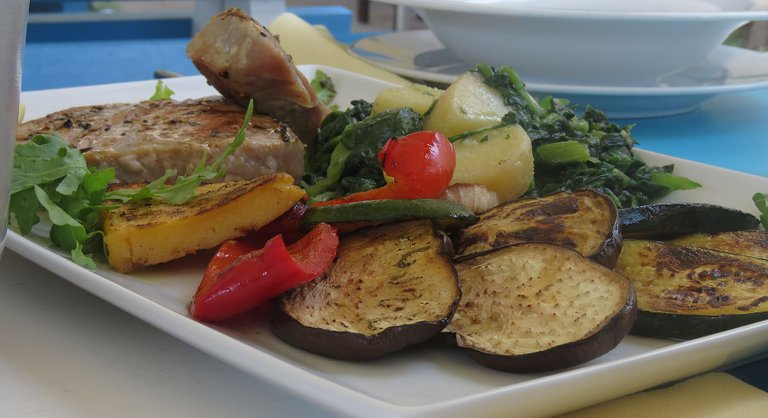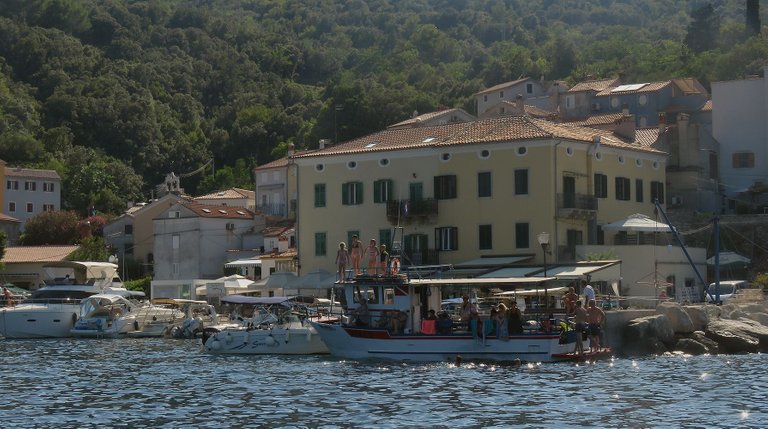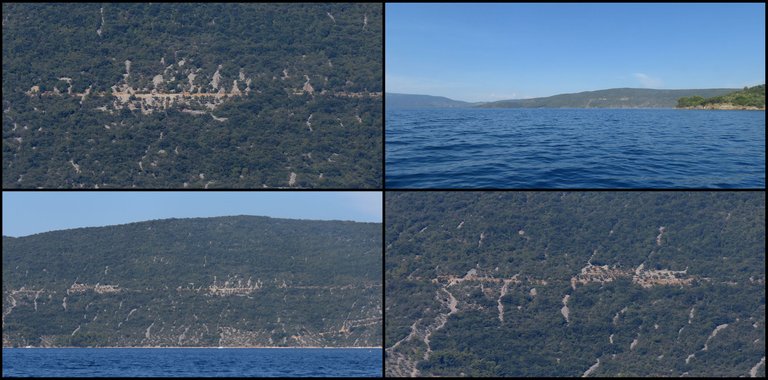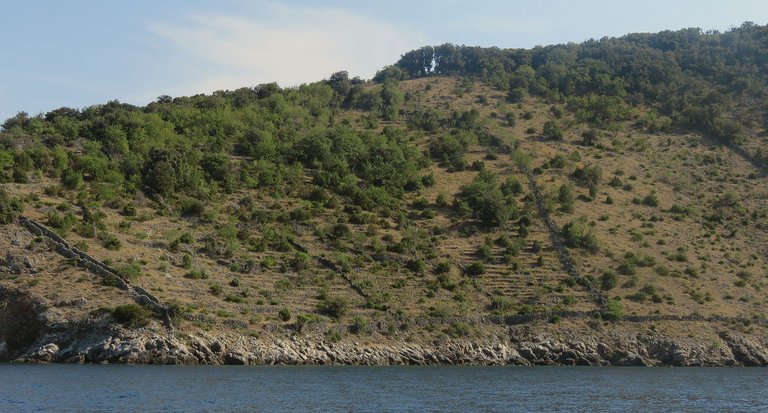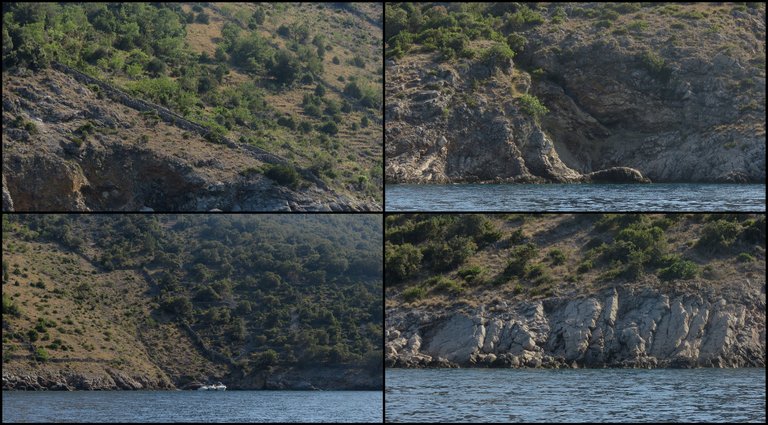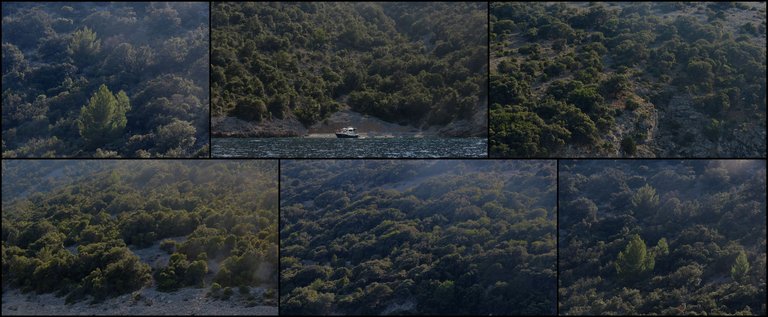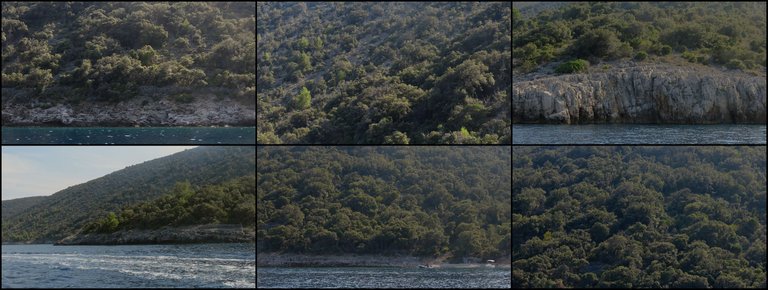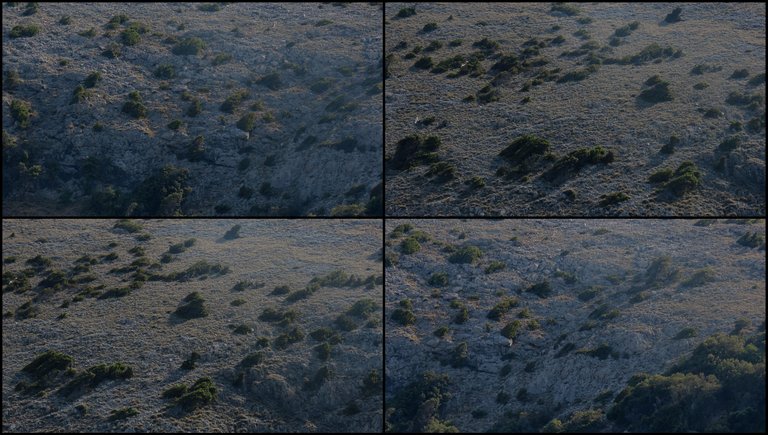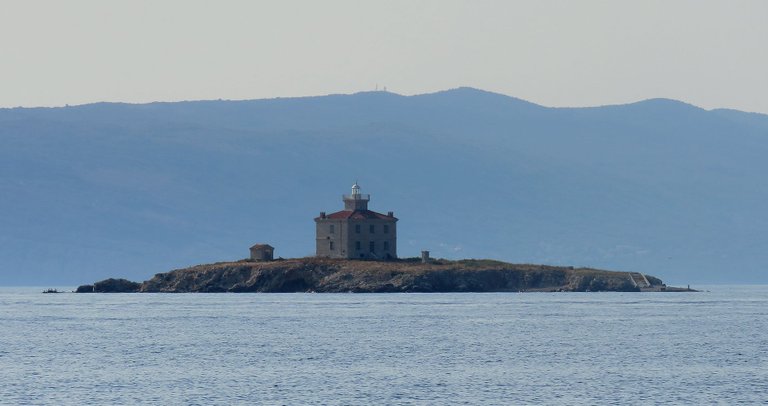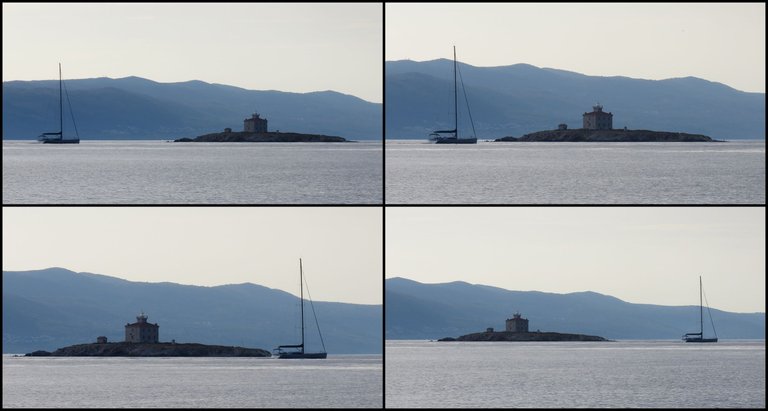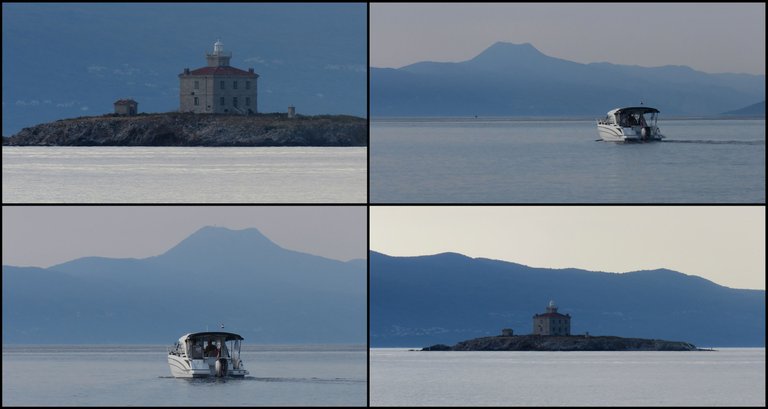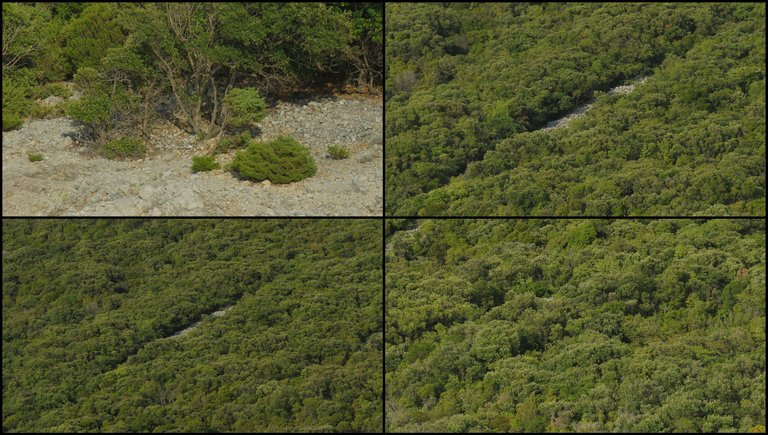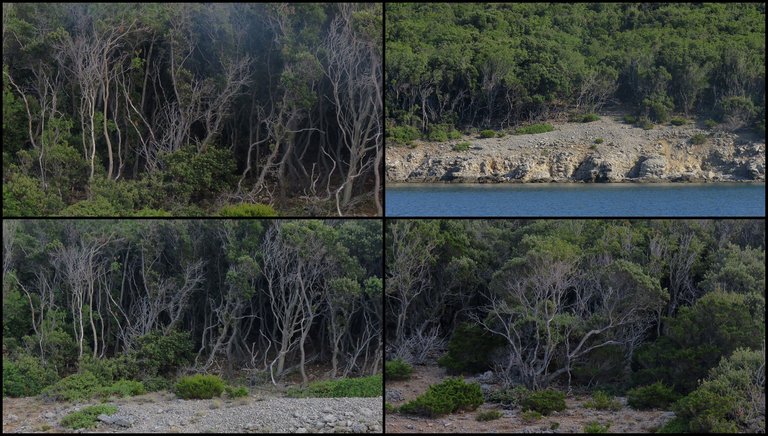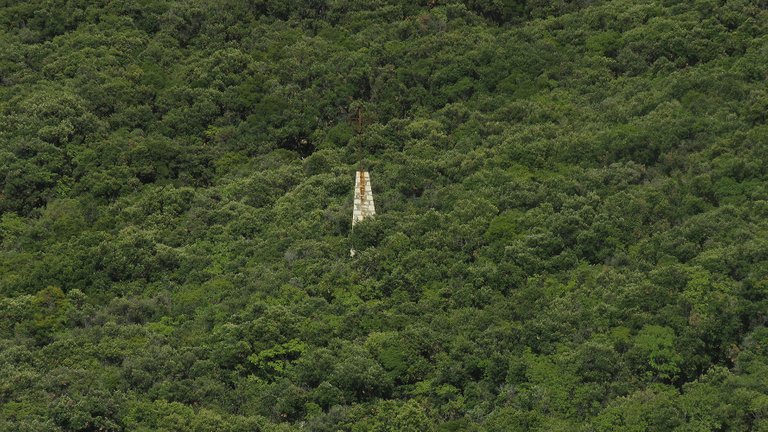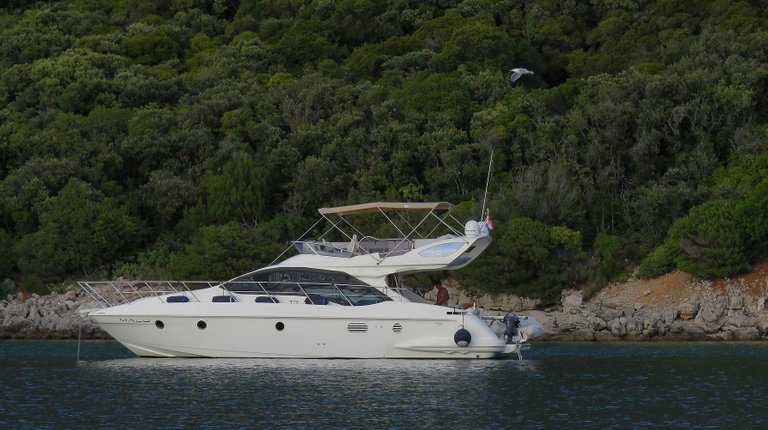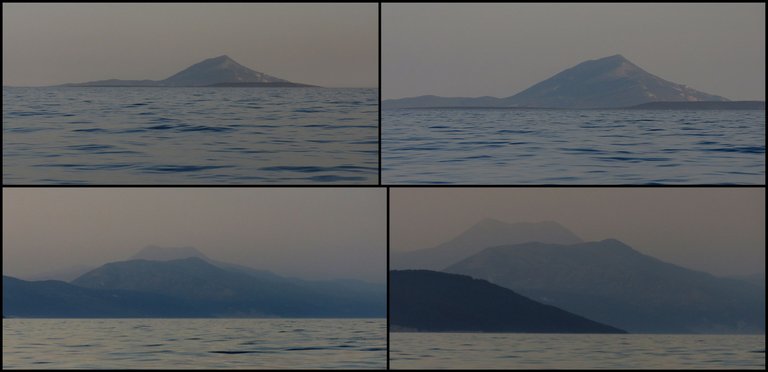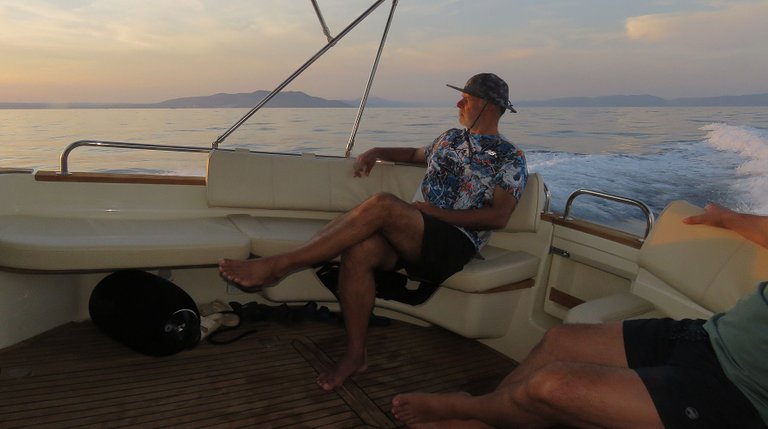The following photographs were taken a week ago ...
... on the boat trip to the island of Cres.

I was with some friends and relatives there.
We were on the sea from the early morning till the night.
In the early afternoon, we were busy enjoying the colorful seafood ...
... in the shade, under the tent of a restaurant ...
... in the small seaside village that goes by the name of Valun.
Cres is the largest island in the Adriatic sea.
It has one small town with a couple of thousands inhabitants (2959 according to the data from 2001) and about a dozen small settlements scattered around the island.
We visited only Valun this time.
The day was extremely hot. Probably the hottest day of this summer so far.
So cruising and swimming along the coastline was much more appealing than hiking under the scorching sun.
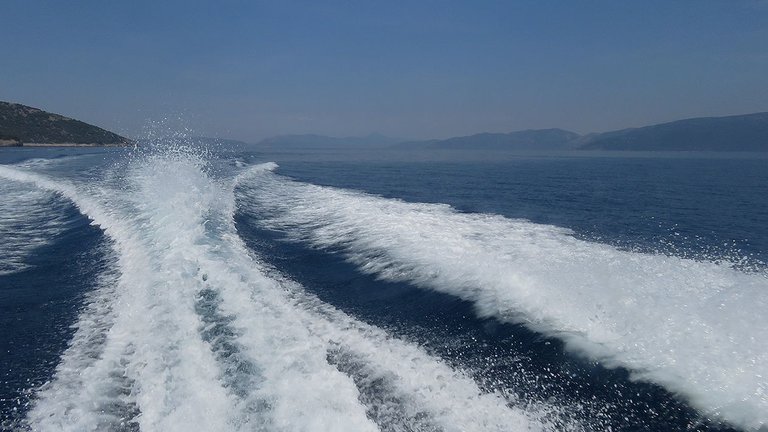
Here you can see the temporary trail left by our pretty fast boat.
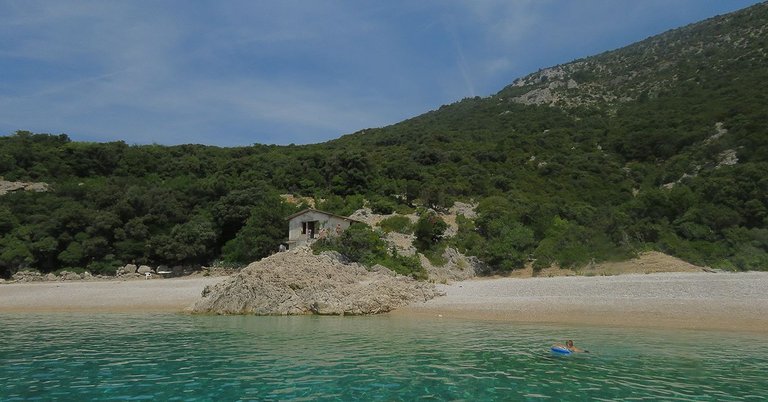
We visited some beautiful, picturesque inlets ...
... so I took plenty of shots showing the beach activities on the nearby land ...
... and details of the landscape in between those inlets.
In between four and six in the afternoon the sunlight was ideal for photographing the textures and patterns made by the uniformly green vegetation.
Large stretches of the coastal terrain in the central part of the island are covered with evergreen shrubs and small trees.
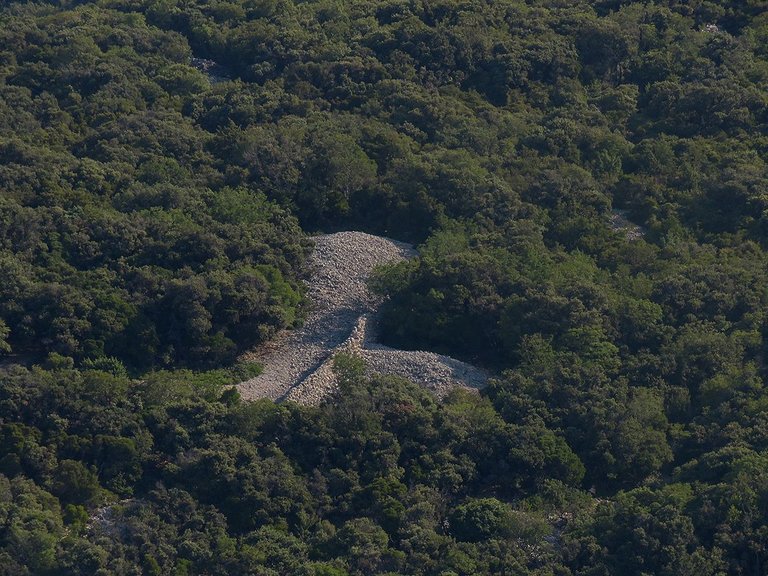
Small clearances create interesting shapes on the green surface.
From a distance, some of those shapes look like simple drawings.

Old drystone walls are also a prominent feature of this landscape.
They add a bit of simple geometry to the picture. As you can see in these photographs ...
... in some places, the vegetation is pretty scarce, so the shades of gray prevail over the green.
Some areas are covered with dense, impenetrable growth of tree heather (Erica arborea).
I also photographed quite a few boats while we were slowly cruising around.
Speed boats. Sailing boats. Ferry boats. There was a nice variaty on display.
The sea looked great ...
... and its surface provided plenty of interesting, changing textures.
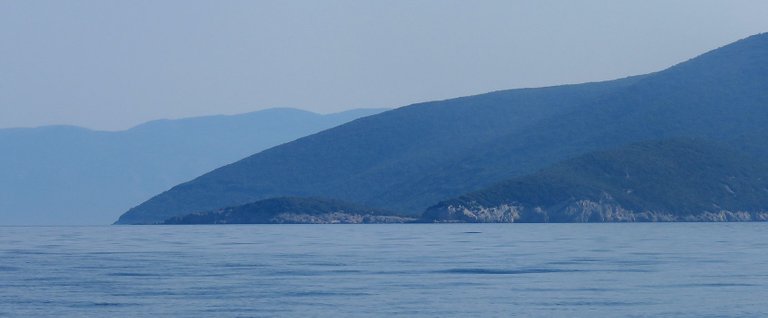
Here you can take a look at the morning atmosphere near the island. The photograph was taken around 9 AM. In the following picture ...
... made of six evening shots, you can see the coast at the end of the day.
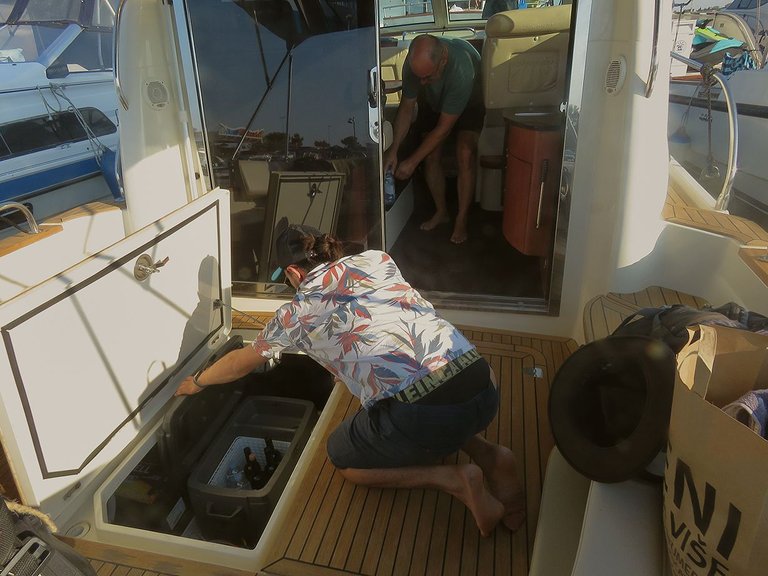
Our journey started around 8 AM ...
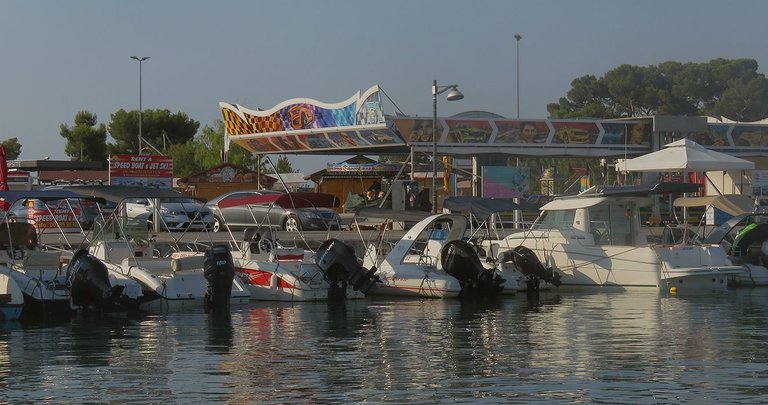
... in the port of Medulin ...
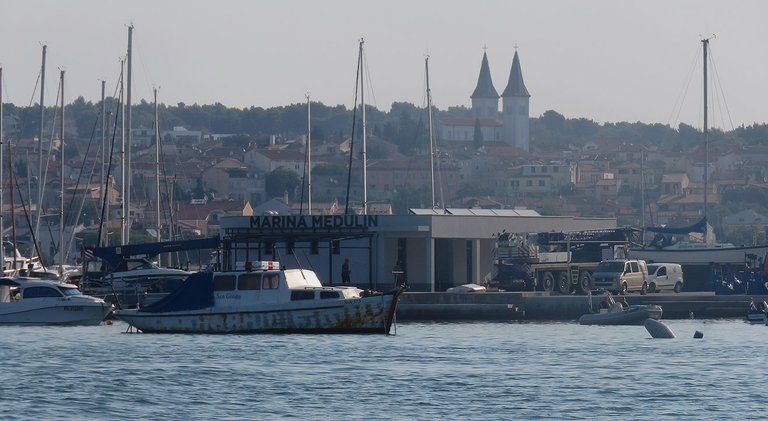
... our hometown.
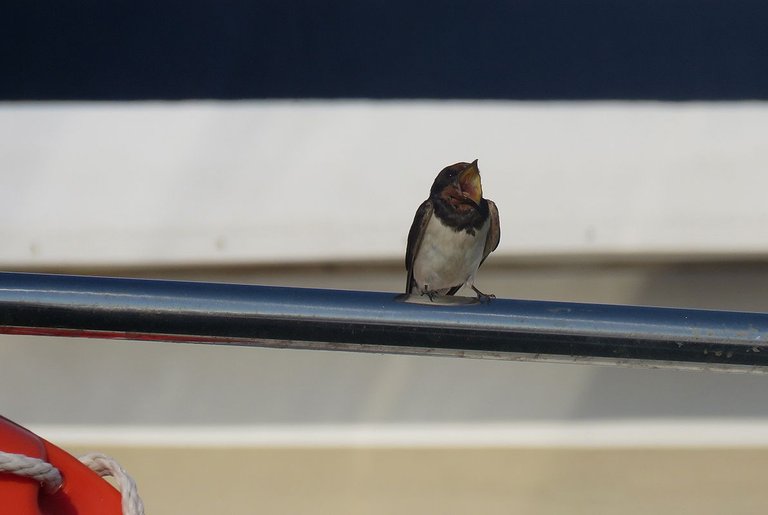
A Barn swallow (Hirundo rustica) was chirping on the railing of the neighboring boat ...
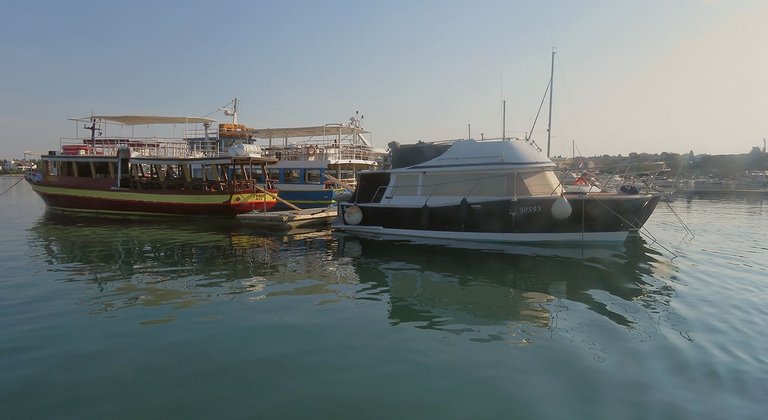
... as we were leaving the pier.
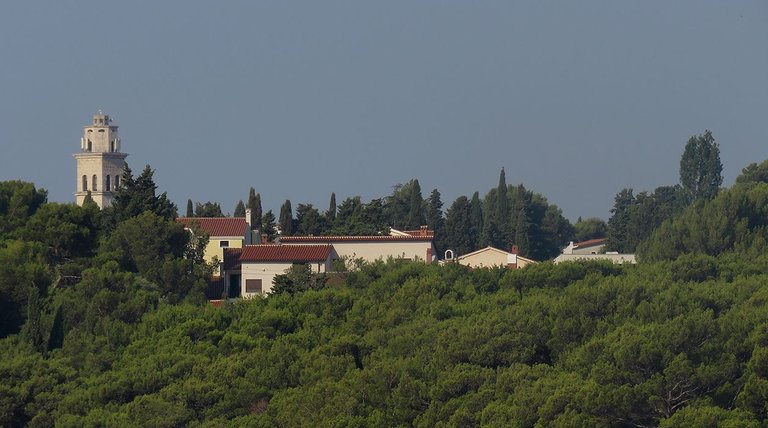
Here you can take a look at Premantura, the village across the bay. You can see only fragments of Premantura in this photograph. The majority of the village is hidden behind the vegetation.
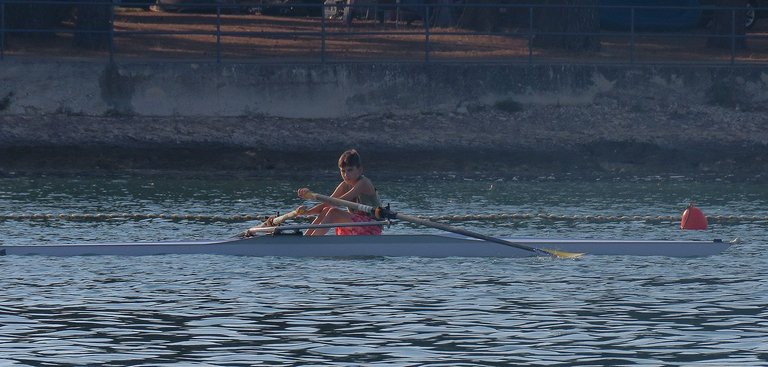
A kid was practicing rowing in the calm water of the bay.
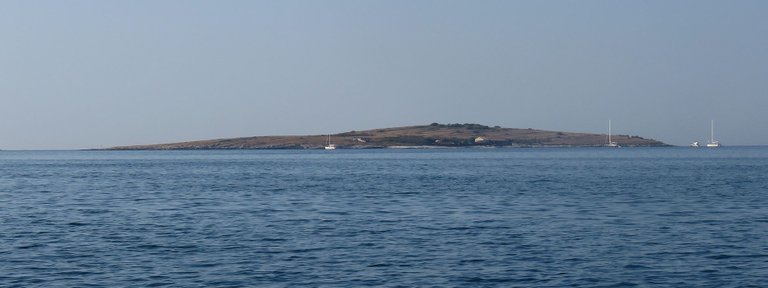
This small patch of land surrounded by the sea is called Ceja.
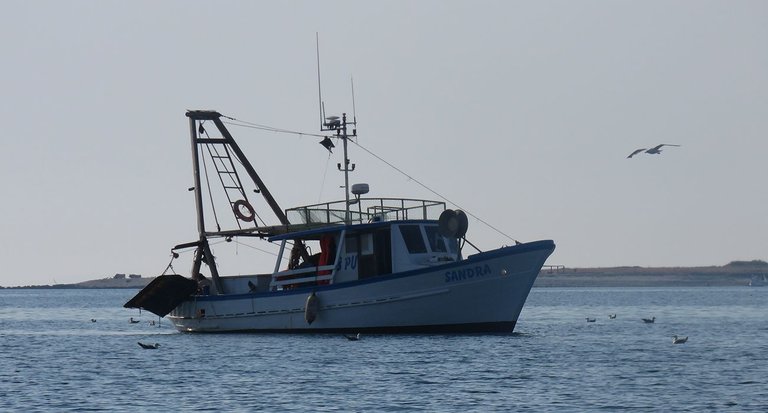
While approaching the islet, we passed by a fishing boat followed by seagulls. Judging by its equipment, this boat is hunting with a trawl net.
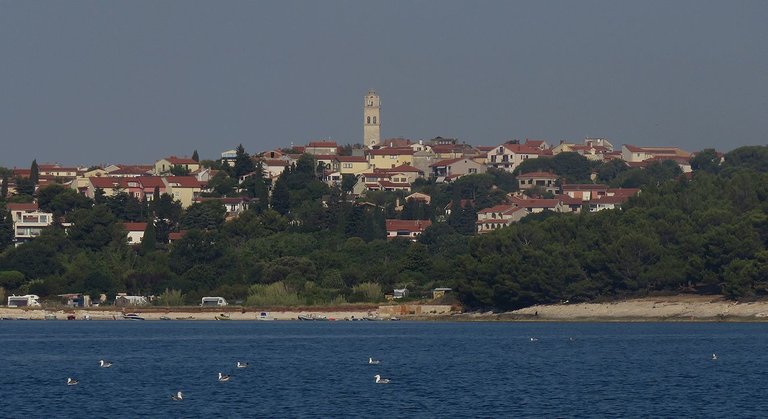
I had a much better view of the village across the bay from here. Premantura was almost entirely visible.
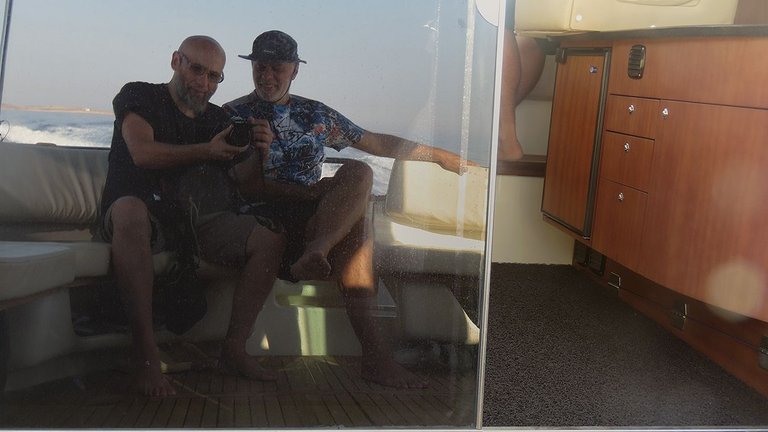
In this photograph, I'm showing some recent shots to my brother. We are both reflected in the glass door of the boat's cabin.
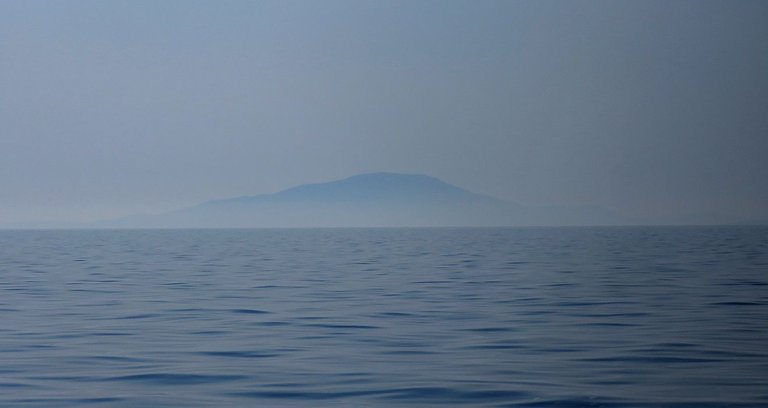
The islands of Cres and Losinj are very close to each other. They are divided only by the narrow canal excavated probably by the Roman empire. There is a swing bridge above that canal, so the islands that were just one island once, are connected again. In this photograph you can see the highest peak on the island of Losinj, protruding from the mist. I took this shot, and then ...
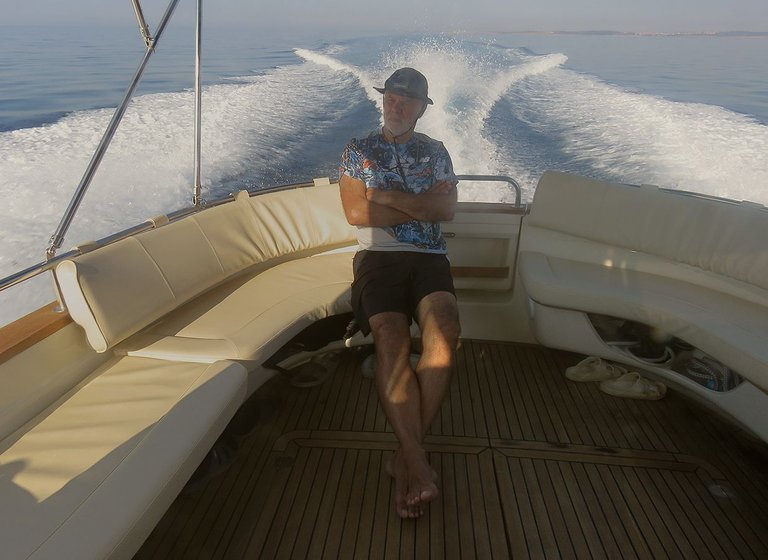
... the boat sped up ...
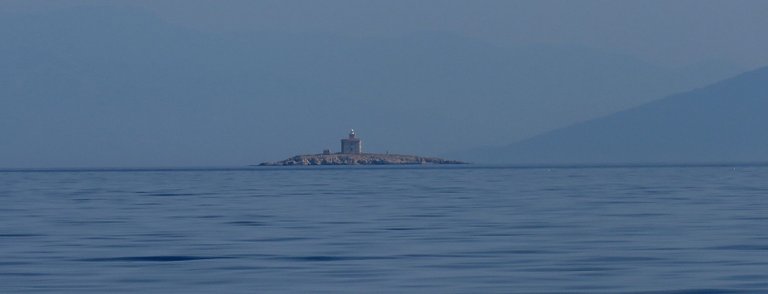
... so I didn't take another photograph until an hour later ...
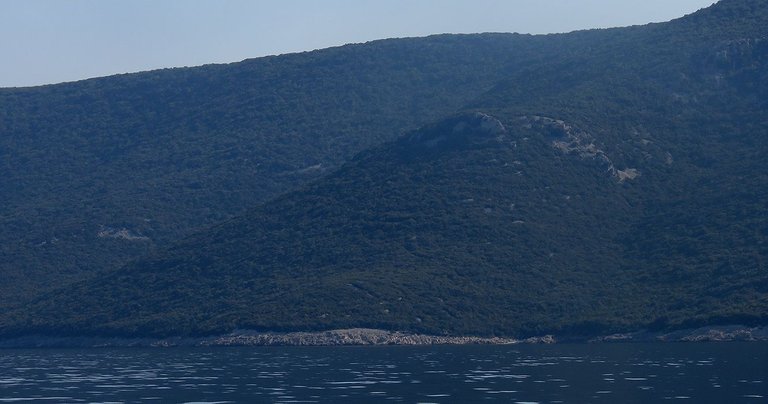
... when we came closer to our destination ...
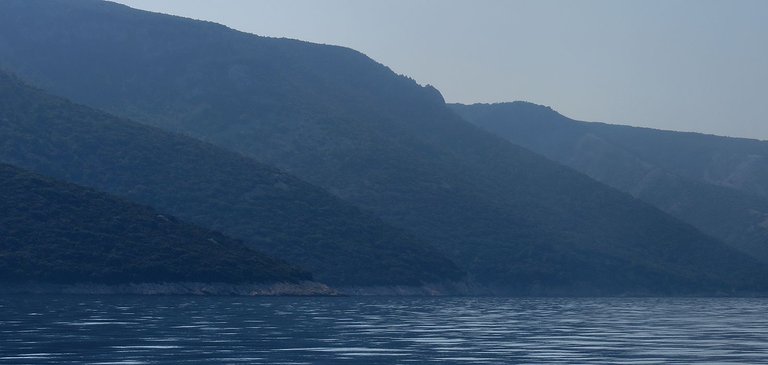
... and the boat slowed down again.
We were passing by a small islet with just one building on it.
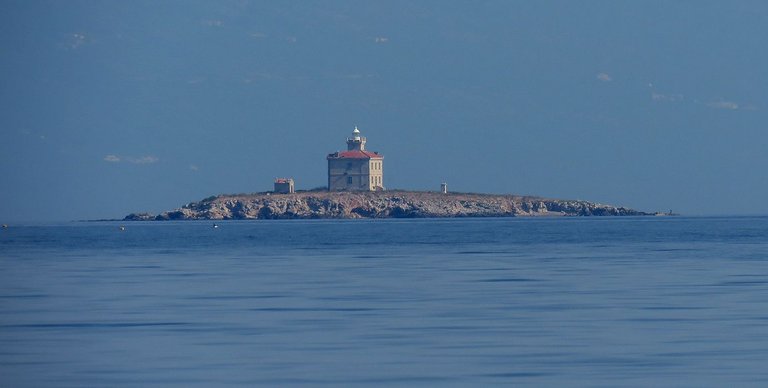
The thing was pretty far from us, so I used all the zoom that my camera can provide to get this photograph. We'll get closer to that islet later, so you'll be able to see more details.
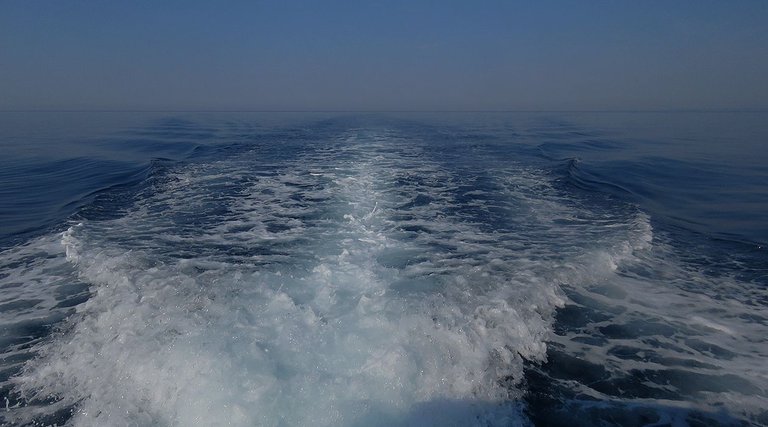
As we were slowly approaching one of the inlets on that stretch of coastline ...
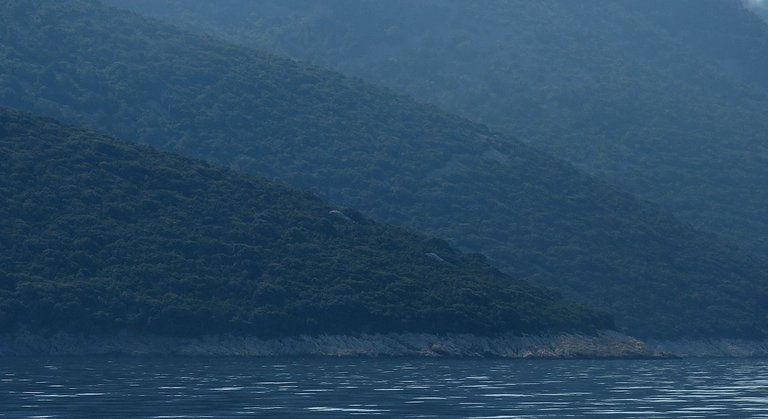
... the blue scenery was changing.
It was turning green.
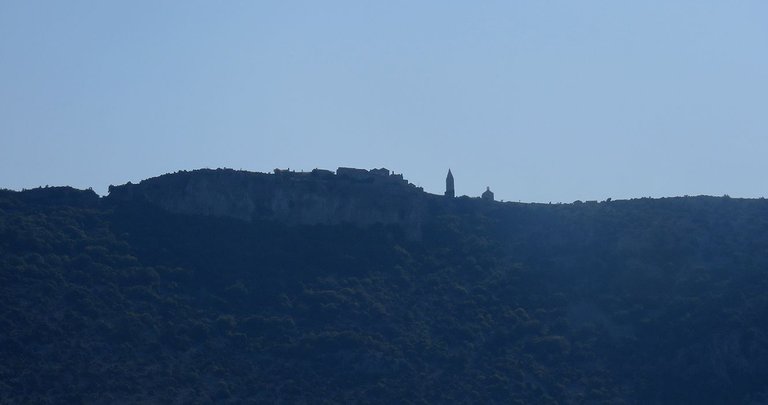
Here you can see the distant crest of the hill ...
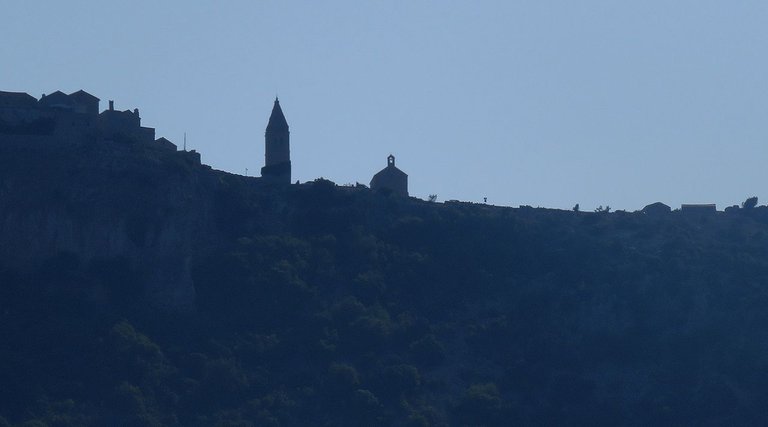
... and the small village on the gorge above the bay. The church tower of the parish church and the cemetery chapel are the two most iconic silhouettes of that place.
In these three shots, we are closer to the shore ...
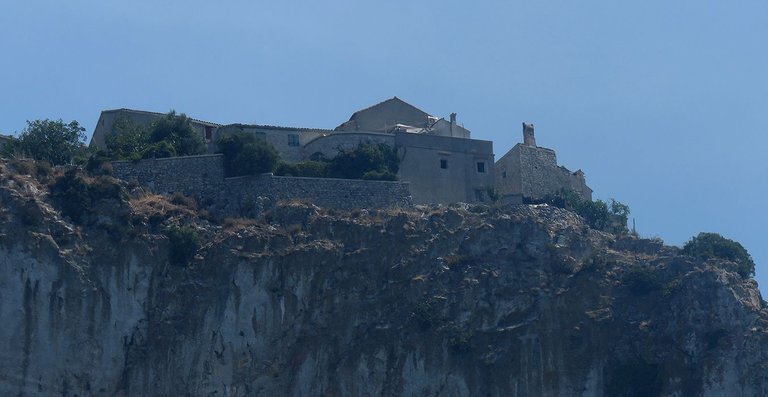
... and with a bit of zooming (all the zooming that the camera can provide to be more precise), the details of the village that goes by the name of Lubenitze are clearly visible.
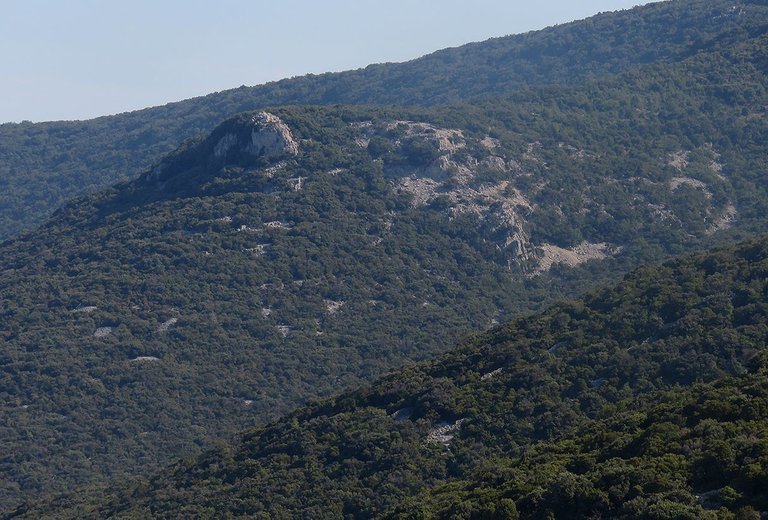
It was time to anchor the ship ...

... and start enjoying life on the beach.
The zooming power of my camera, the Canon PowerShot SX60 HS, is pretty solid ...
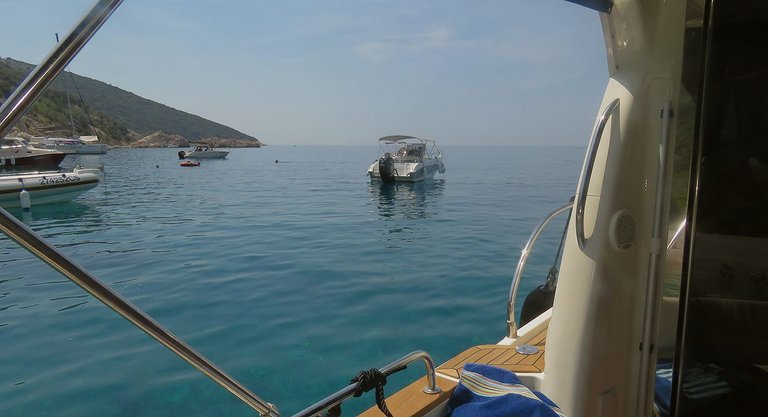
... so I was able to take plenty of photographs from the boat.
Here you can see the abandoned house in between two relatively long stretches of pebbles divided by a short stretch of coastal rocks.
In between two swimmings ...
... I found the time to do some photography.
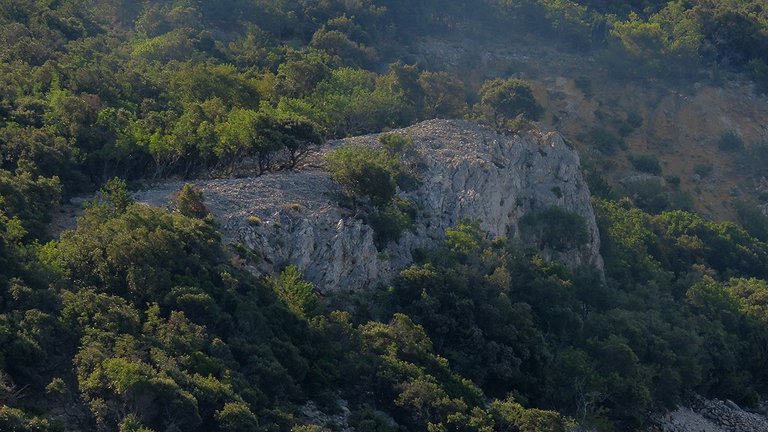
The scenery looked great, but at this point, I was pretty sure that I already photographed everything worth photographing.
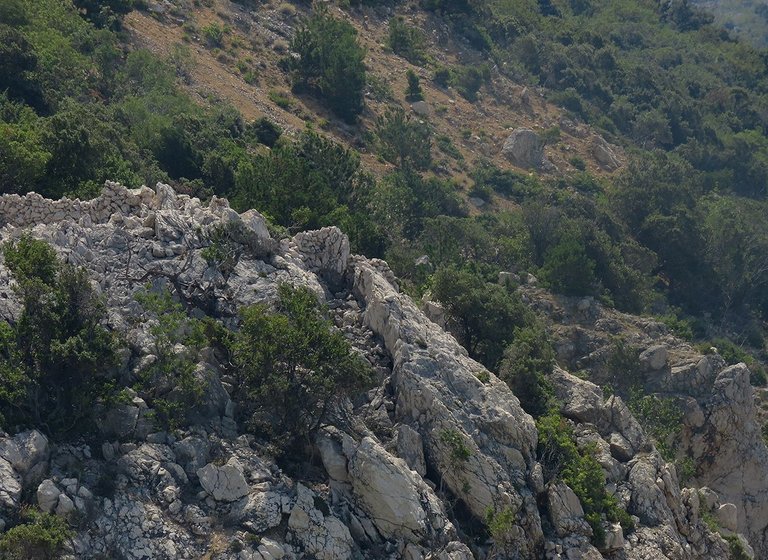
However, the zooming revealed plenty of interesting details ...
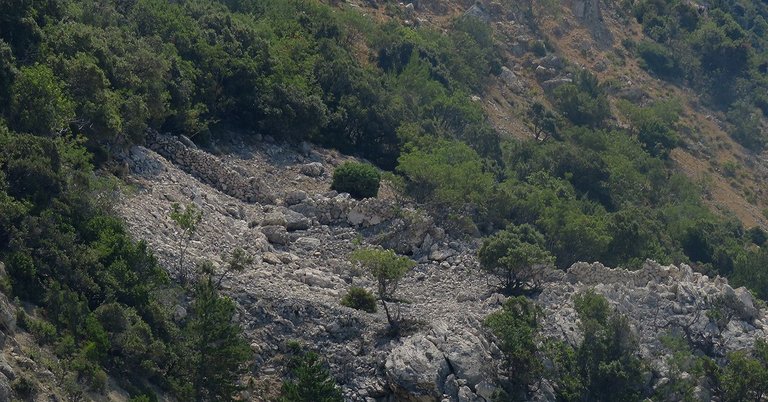
... on the hills above the beach.
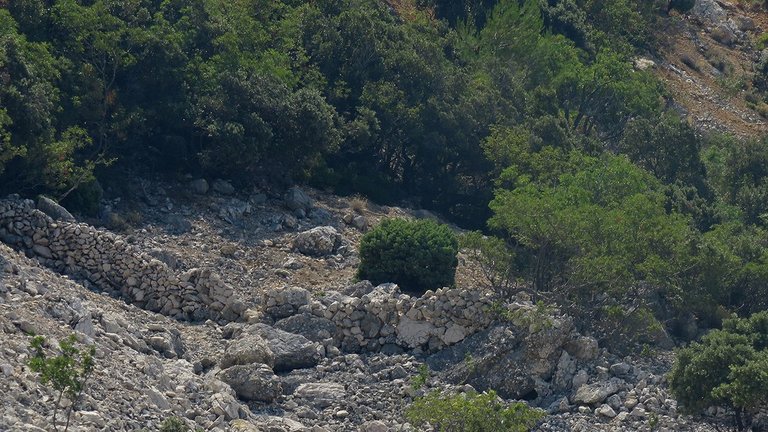
The shrub in the center of this picture looks like something created by a gardener. It looks like some trimming was involved. But it wasn't. I'm pretty sure about that. Some shrubs sometimes get that look naturally.
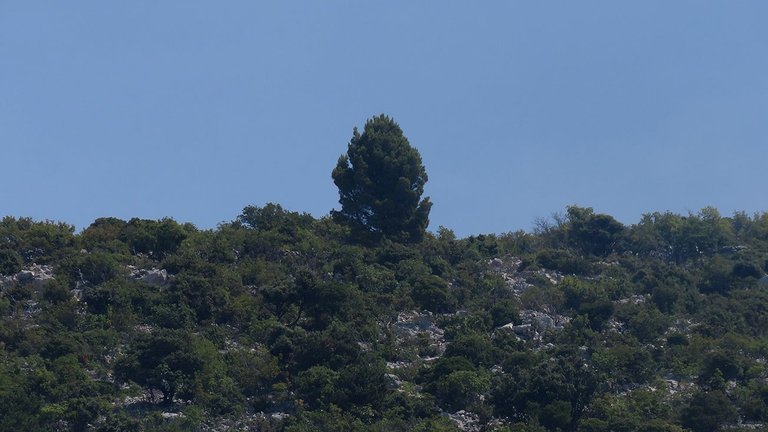
This pine tree on the crest of the hill also stood out among shorter vegetation.
Here you can see a few more shrubs that have that neat, trimmed look.
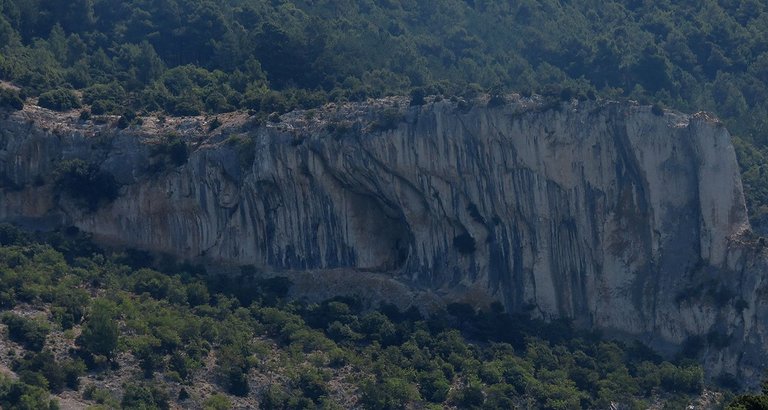
These barren rocks also looked pretty cool.
Here you can take another look at the beach below.
In this set of six photographs, you can see the distant stuff that I photograph from the boat's bow.
As the time was getting closer to noon ...
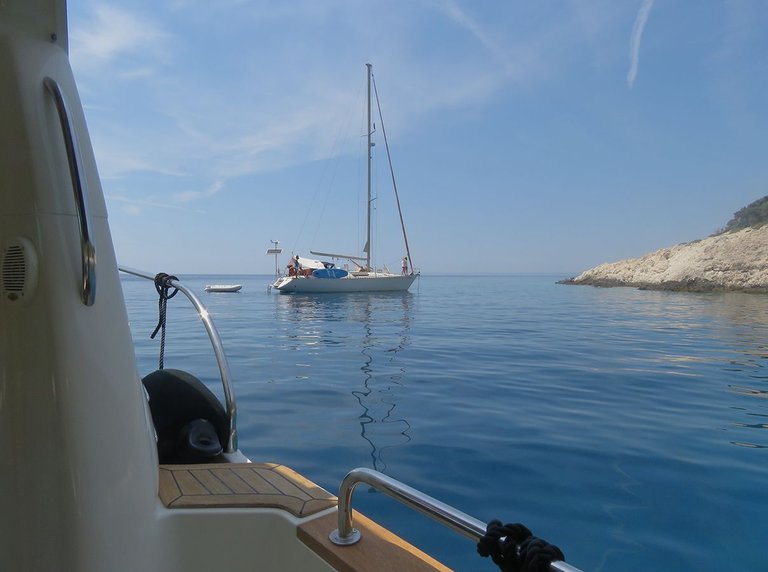
... and the temperature was rising ...

... more and more boats were approaching the beach from various directions. The relatively big boats used for organized excursions had to be anchored in deeper water.
But, fortunately, a much smaller taxi boat was there to provide the transport to the land.
This fast, lightweight boat with a relatively flat bottom can be simply stranded on the pebbles and then easily pushed back into the water. This landing scene...
... was photographed as a reflection in the glass door of the boat's cabin.
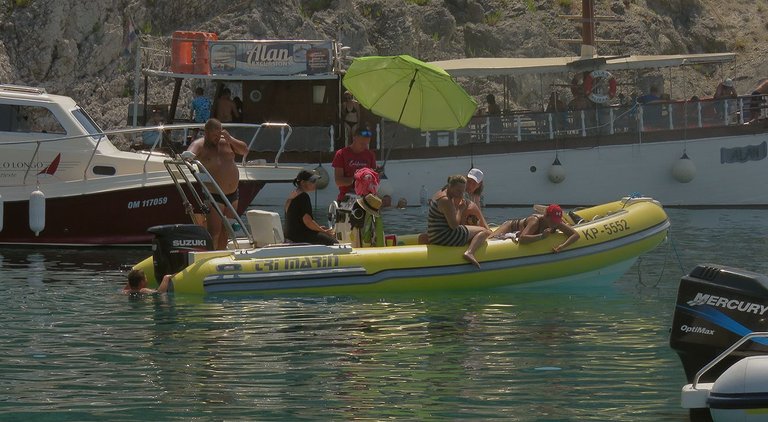
Here you can see a small rubber boat with a parasol that was nicely matching the boat's color.
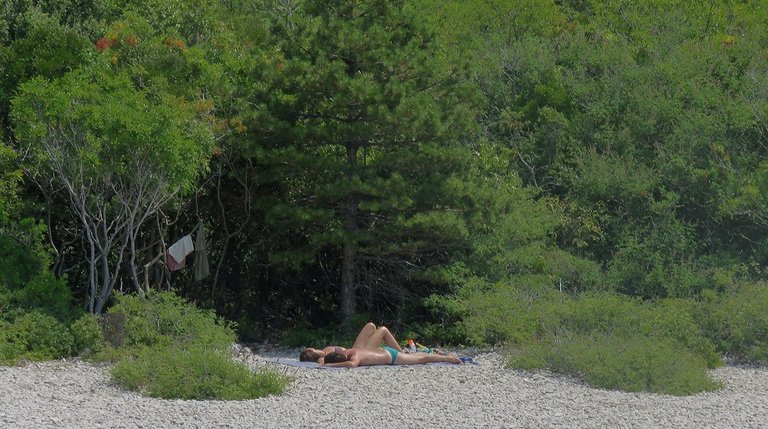
I took only a few more photographs ...
... because very soon ...
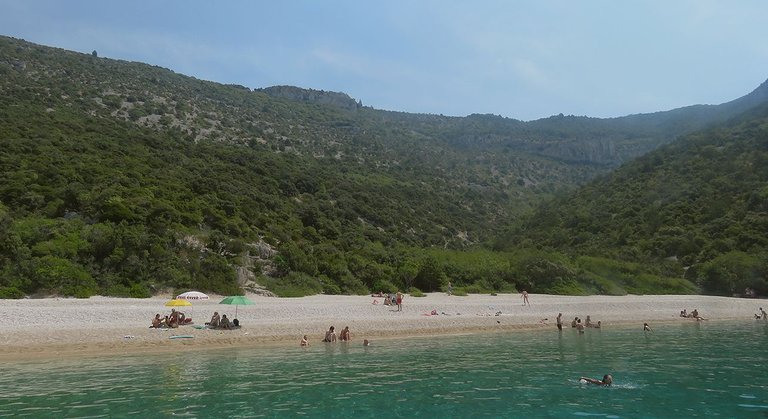
... we pulled the anchor out of the water ...
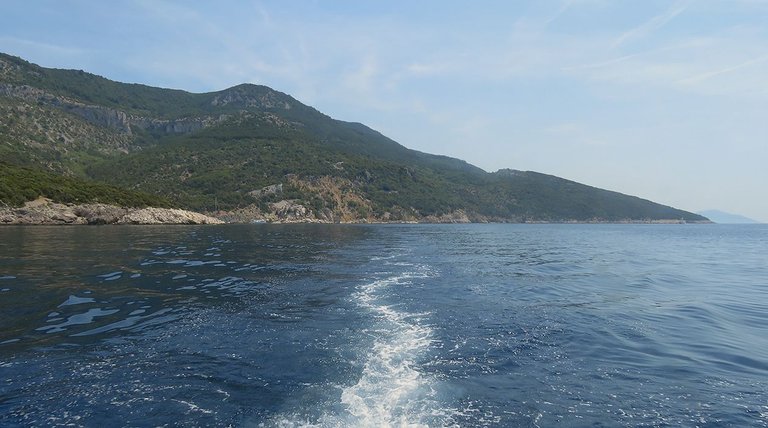
... and continued the journey. Here you can see the boat's trail that looked like a big white sea serpent and in the following photograph ...
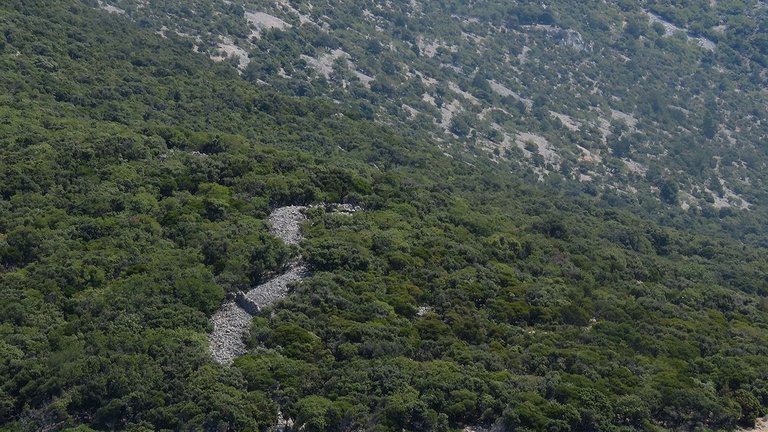
... you can take a quick look at the fairly similar shape in the distant hills behind us.
It was half past noon ...

... and the crew was pretty hungry.
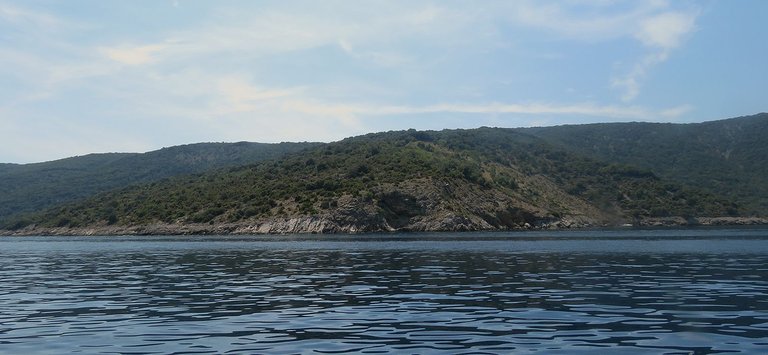
We were directed towards the village of Valun.
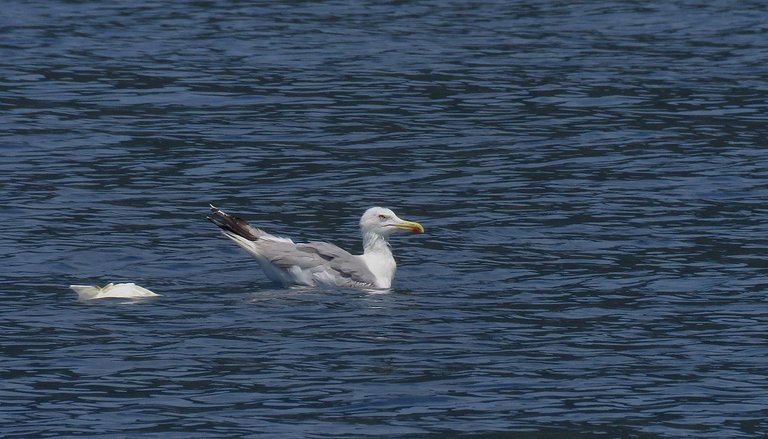
We passed by this wandering seagull ...
... some small, secluded beaches ...
... and the iconic islet that already appeared in this post.
This time we got a bit closer so I was able to take a better shot that shows more details of the lighthouse. We'll pass that way again and I will take more photographs of the same building in a different light. You can see one of those future photographs in the left half of this picture.
I took a few more photographs on our way to Valun. This is some cave in the coastal rocks, and in the following triptych ...
... you can take a look at the harsh landscape with dried-out grass, various shrubs, and drystone walls.
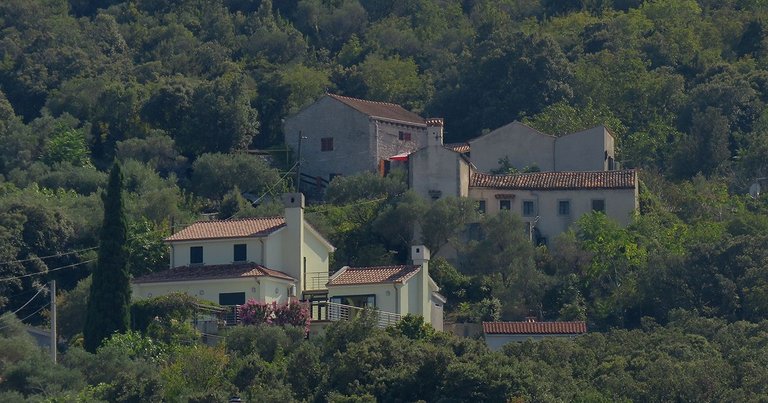
Here you can see the first houses situated outside the village. Some kind of micro-suburbia.
In this set of photographs, you can see the hillside suburbs and the seaside center of the village.
I zoomed in here, to take a better look at the center and the waterfront.
Here you can see an interesting set of walls ...
... along the coastline on the outskirts of the village.
Here you can take a look at the colorful houses on the slopes above those walls.
I took one more shot as the boat was approaching the harbor, and then ...
... we parked the boat and jumped on the pier.
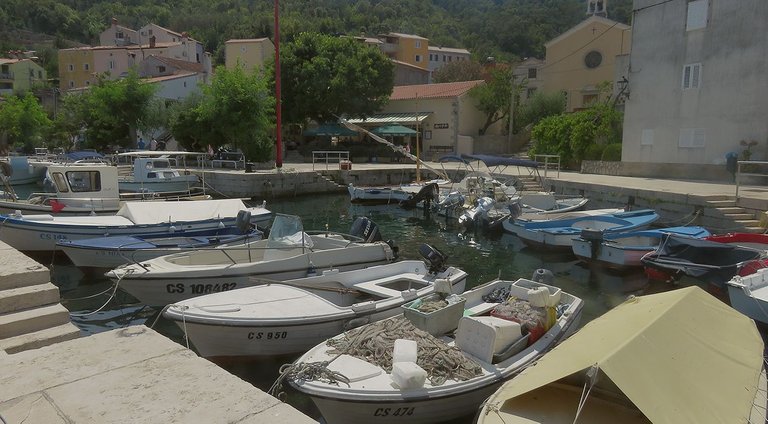
It was time to take a walk ...
... and do a bit of casual exploration ...
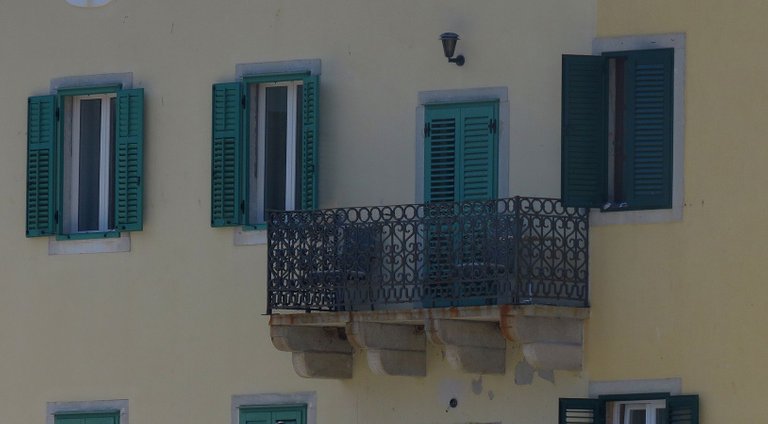
... before lunch.
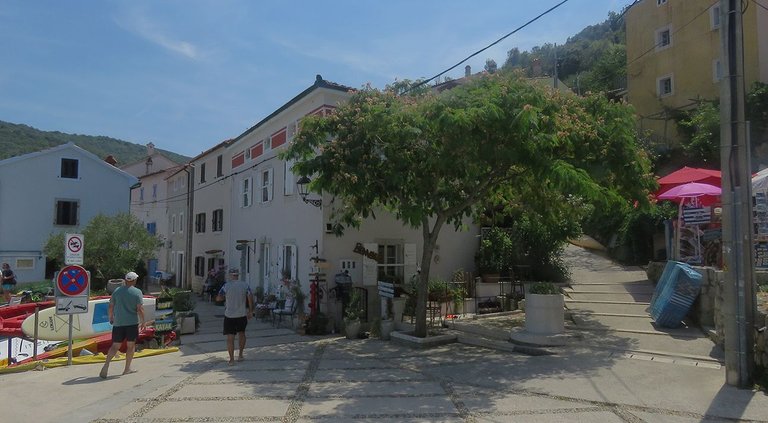
The current Valun developed from the small port of an older settlement called Buchev that was abandoned long ago and slowly completely disappeared.
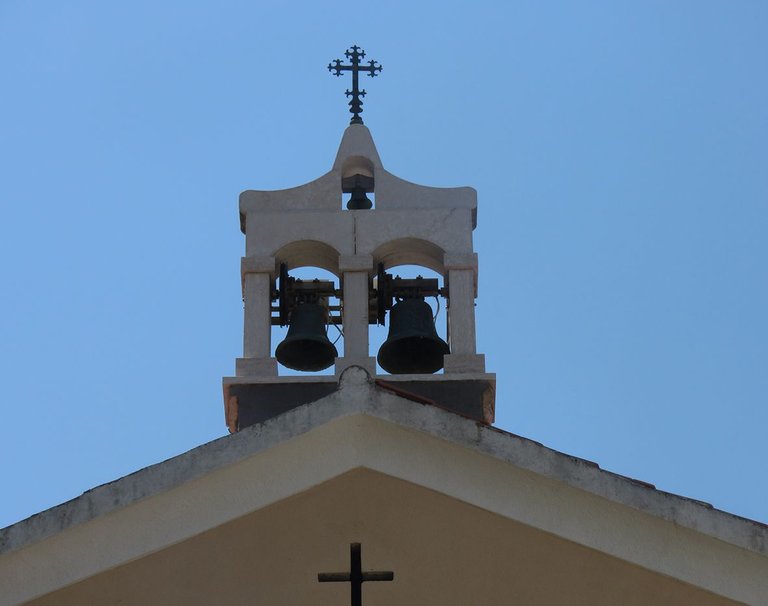
Here you can see the small bell gable of the Parish Church of the Blessed Virgin Mary of the Holy Rosary. The church was built in 1830. But its interior holds some important old artifacts from the 9th century.
Here you can take a look at the balcony above the small grocery store situated near the church.
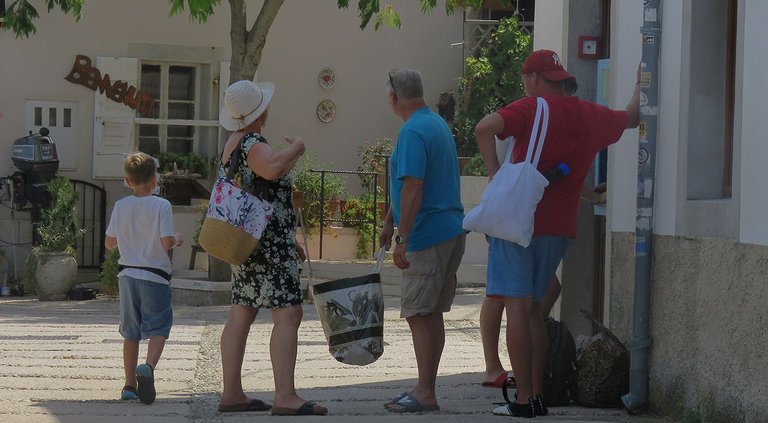
These people were waiting in front of the post office.
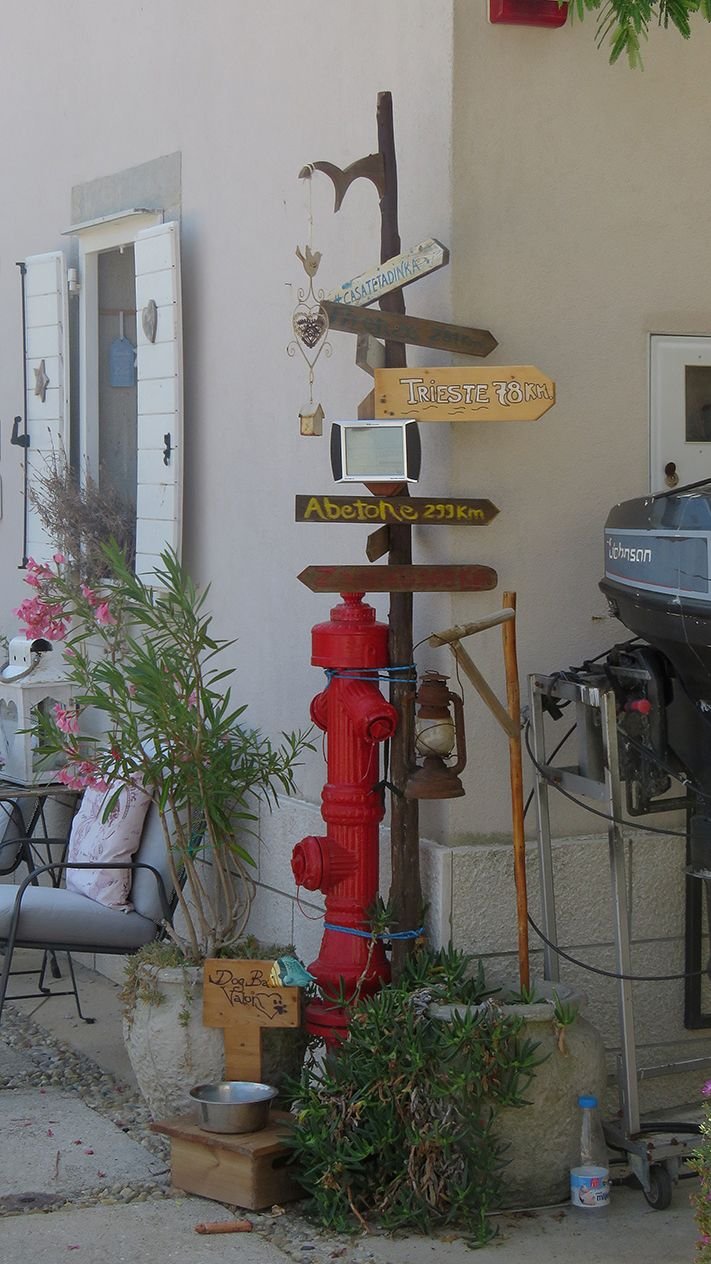
Here you can see a red hydrant and some funny direction signs.
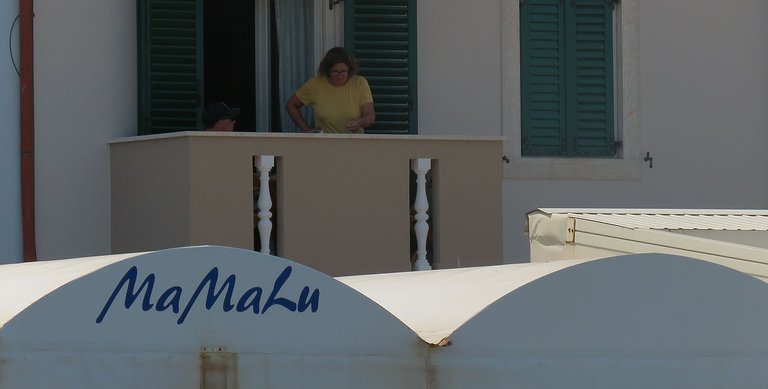
Here you can take a look at another small balcony that I encountered along the road.

Valun is a small settlement, so I reached its end very soon.
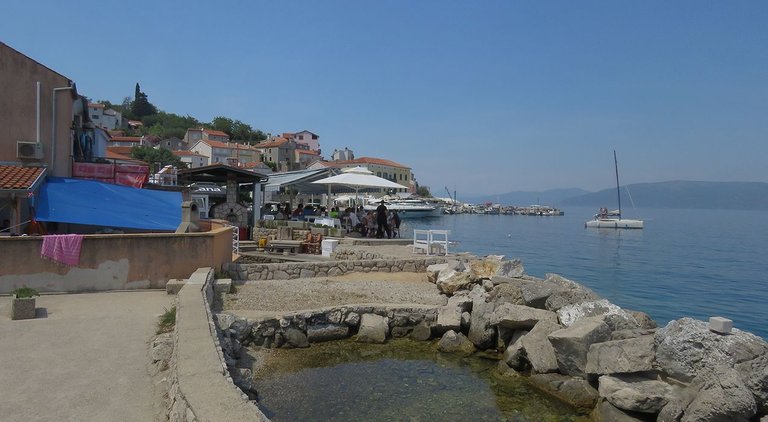
I stopped for a moment because from here I had a nice view of the village.
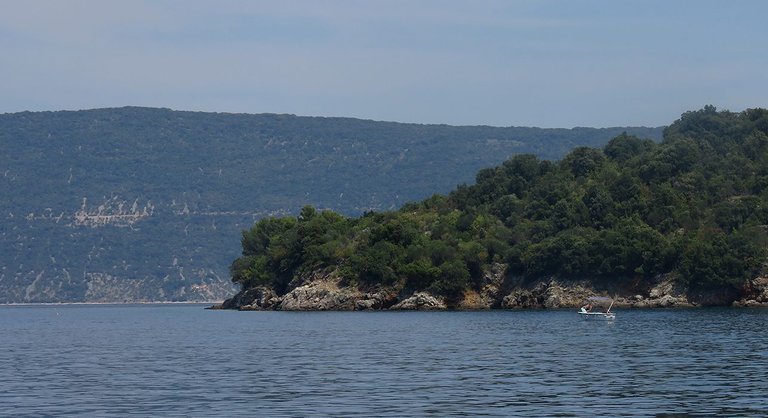
It was a good spot for photographing the bay ...
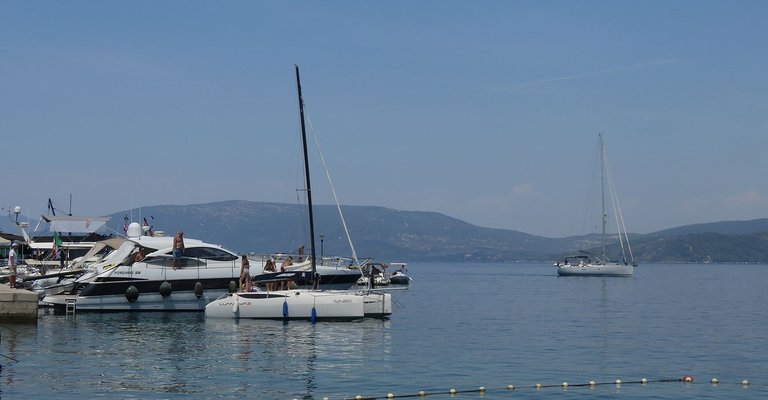
... the boats ...
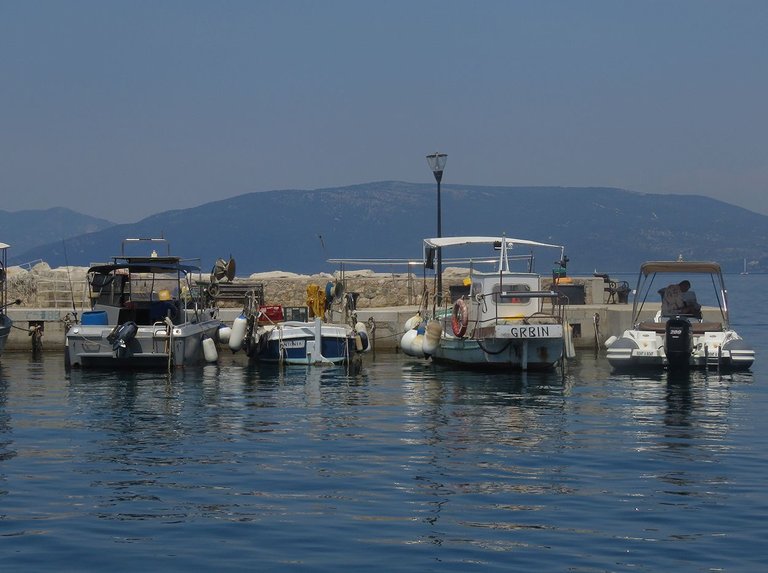
... and the waterfront.
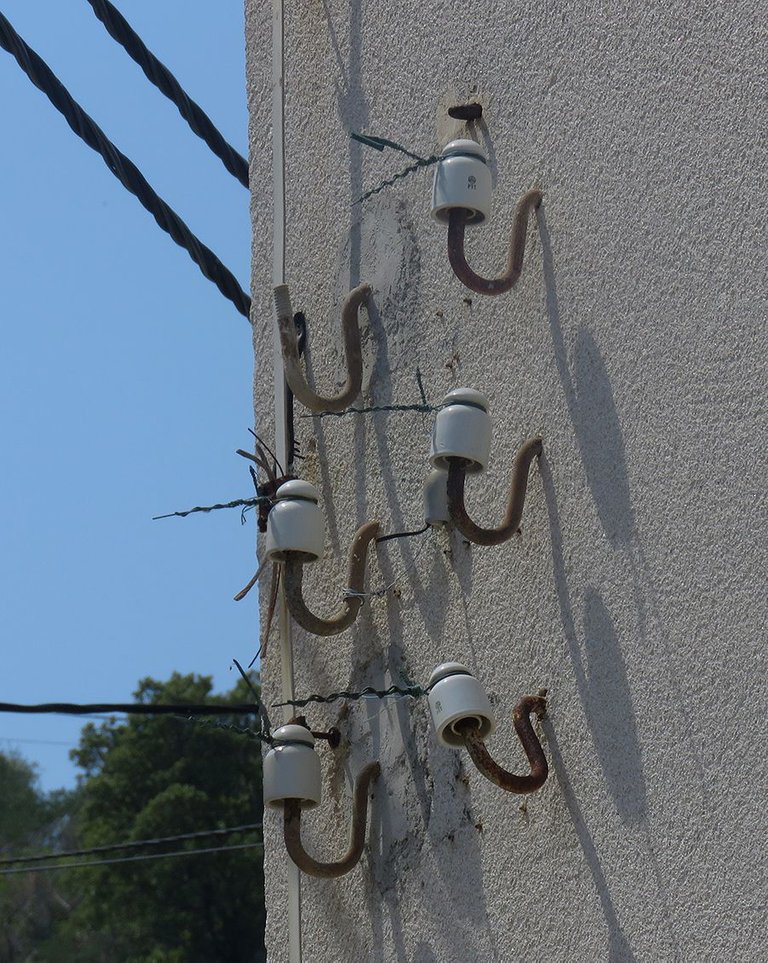
On the way back I noticed these old ceramic insulators. They look like some kind of conceptual artwork on the facade.
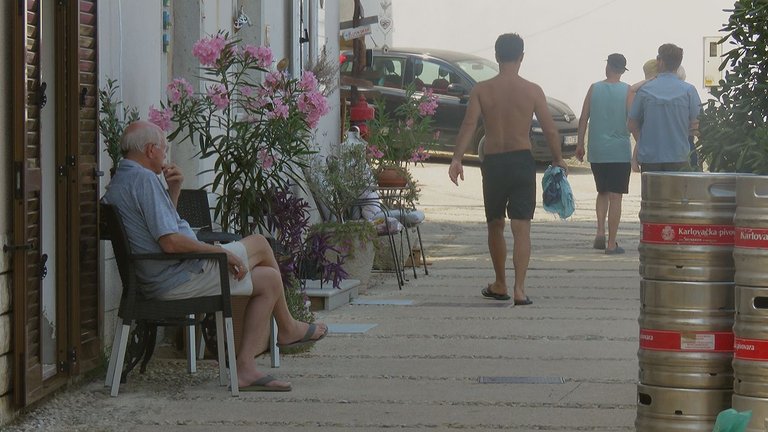
This photograph is trying to convey the atmosphere of that shady narrow street.
In this wider shot, you can take a better look at the general atmosphere.
When we reached the waterfront, I stopped to photograph the sparrow ((Passer domesticus) that was resting on one of the boats there.
Soon we sat down to eat. In the shade of the terrace in front of the restaurant that goes by the name of San Marco.
The dishes were delicious and colorful. We started with some cold stuff. Various shellfish and crustaceans. Some of them were barely cooked, others were raw. The sea has a great aroma so many things that live in it don't need much cooking and seasoning.
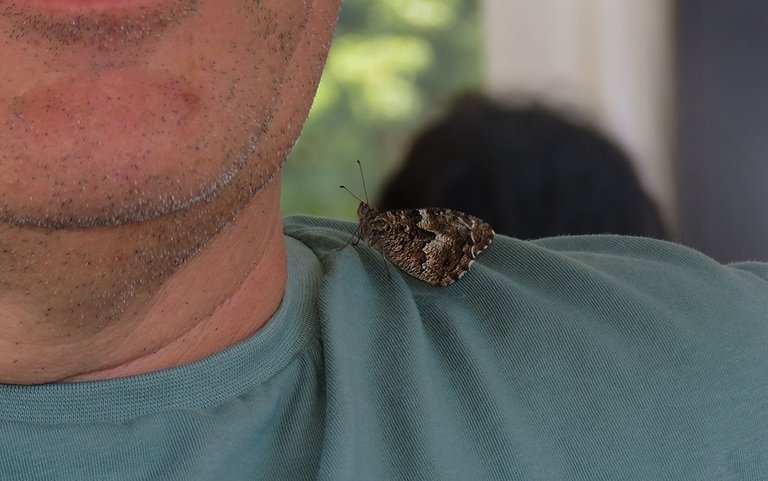
A butterfly was flying around and at one point came to our table, landed on the shoulder of one of us, and stayed there for at least ten minutes. This is the Hipparchia senthes, a species that inhabits harsh, dry habitats. Rocky slopes, scrublands, and similar places.
The warm, cooked stuff was also great. Here you can see some homemade pasta with a nice variaty of mollusks and crustaceans. In the following photograph ...
... you can take a look at the grilled tuna accompanied by a nice variaty of fresh seasonal vegetables.
We had a dessert too. I didn't photograph that phase of the lunch but I took three shots of the wasp (Vespula vulgaris) that came to scavenge the sweet remains. After some more talking, teeth picking, and stuff like that ...
... it was time to leave the village ...
... and continue the journey.
At this point, we were slowly navigating ...
... not too far from the shore ...
... in search of some new cool beach.
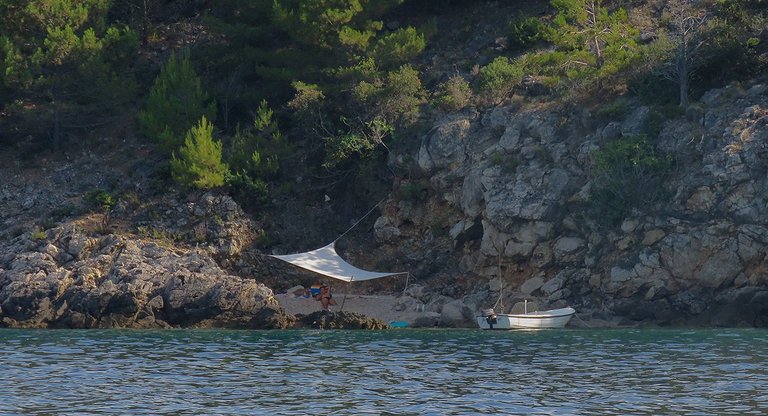
This one was too small and already occupied ...
... so we continued.
Drystone walls looked great in the light of the late afternoon. Considerably better than before.
The scenery on land was constantly changing.
In these photographs, the vegetation is getting denser and looks juicier ...
... but soon we passed by another rocky slope with scarce vegetation.
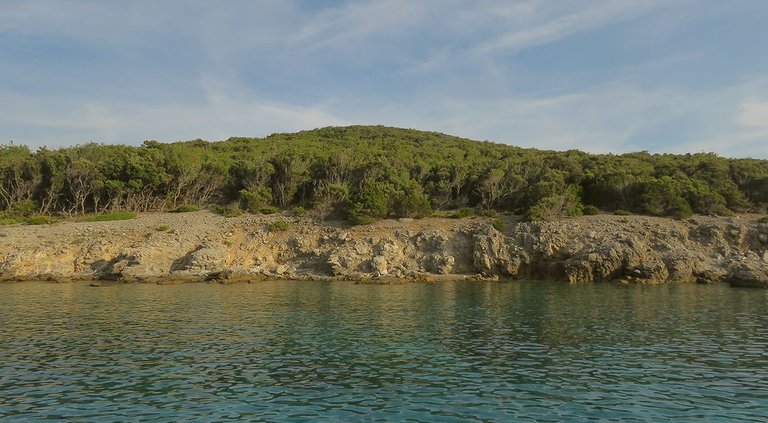
When we reached this inlet it was time to stop ...
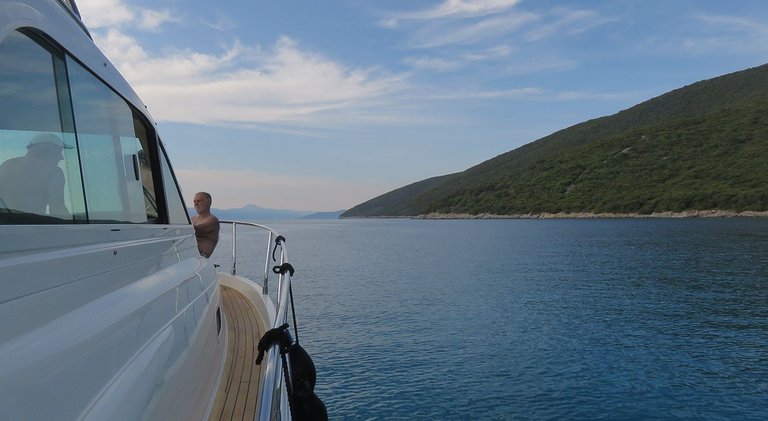
... anchor the boat ...
... and jump in the water.
Do you remember this islet?
It appeared quite a few times in this post. Near the start and in the middle.
We were pretty close to it now, so since the end of this story isn't very far ...
... I think that this is the right time to reveal its name. The islet is called Zaglav and the lighthouse was built in 1876.
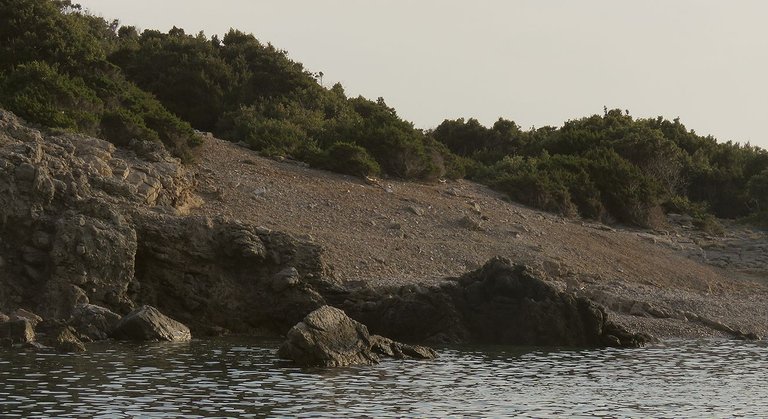
After an hour of swimming and snorkeling ...
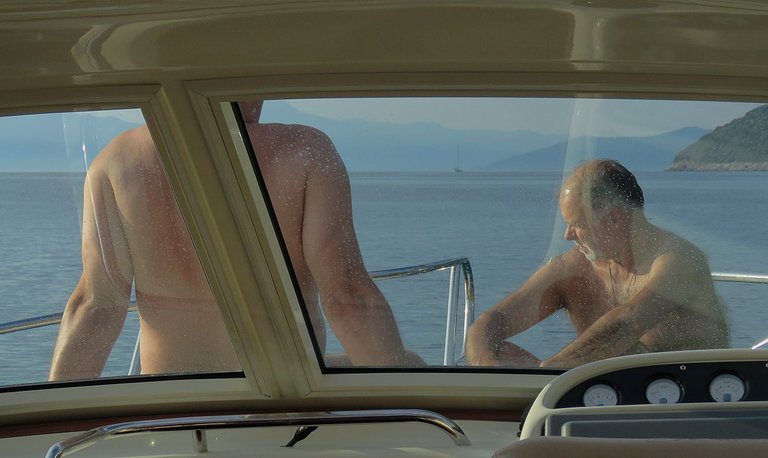
... we spent another hour on the boat.
The vegetation in this part of the island ...
... is very dense. In two of these photographs, you can see a small patch of reddish-brown foliage surrounded by a vast area in quite a few juicy shades of green.
Near the sea, most of that plant cover is made of only one resilient species. The tree heather (Erica arborea).
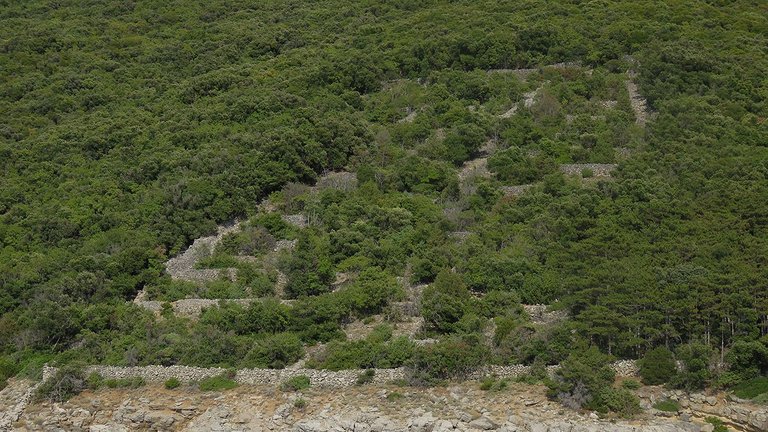
Here you can see the drystone walls surrounded by vegetation.
Not far from those walls, always through the zoom of my camera, I found a different structure made of stones. I don't know what is this exactly. It looks like something that has something to do with the navigation. Some kind of signaling pole or something like that. Yeah. Something, you know. This thing is definitively something if you ask me.
Here you can take a look at the nearest coastal rocks.
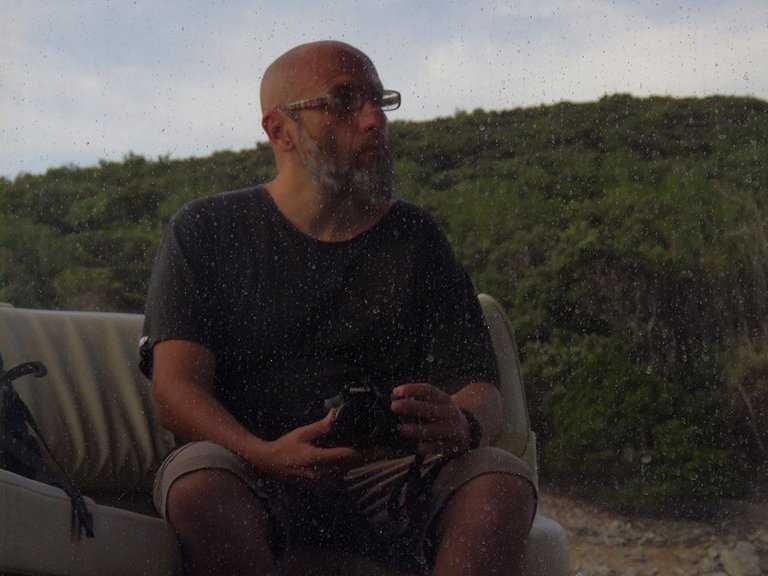
I took only two more photographs before we got the boat ready to drive back home. This self-portrait reflection in the good old glass door of the cabin ...
... and the portrait of the boat anchored nearby. A seagull entered the scene at the right moment.
These photographs were taken as our boat was slowly getting away from Cres.
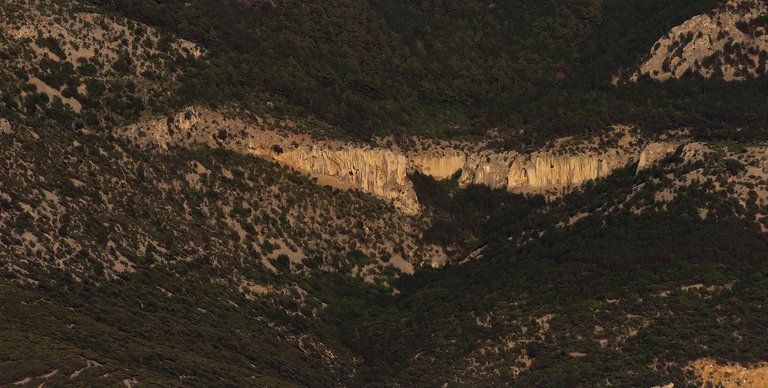
Here I took one last look at the island's landscape in the evening light.
I saw some strange yellow mist on the horizon. Maybe that had something to do with the wildfires that were creating problems in quite a few hot spots on the Croatian coast in those days. I don't know. Maybe.
We were tired but in a good mood ...
... the sun was going down ...

... and the boat was accelerating so I put the camera in the bag and stopped photographing.
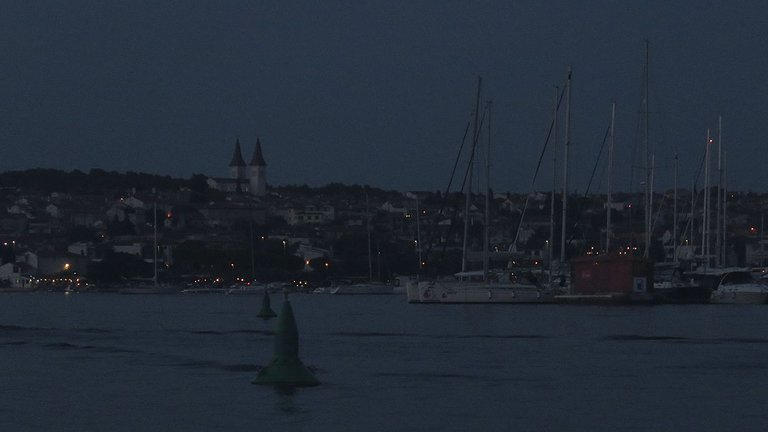
This shot was taken an hour later in the bay of Medulin, our hometown. You can see the iconic church with two towers in the central-left part of the picture.
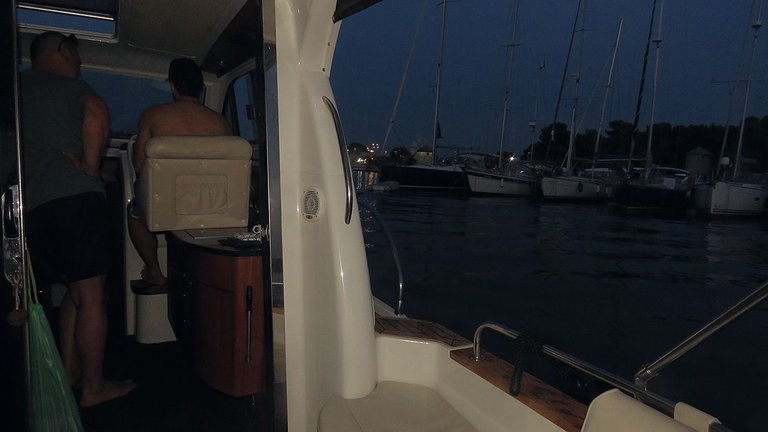
The day was almost done, we were approaching the pier ...
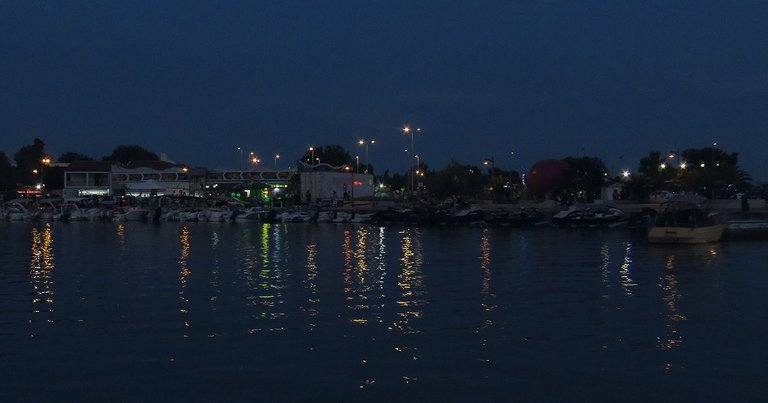
... and this post ends here.
AS ALWAYS ON HIVE, THE PHOTOGRAPHS ARE MY WORK - THE END.
